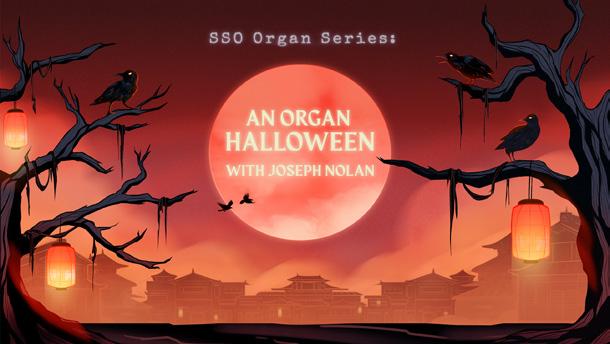

Concert Programmes
21 & 22 Aug 2025
Chloe Chua / Tchaikovsky
Violin Concerto
29 & 30 Aug 2025
Pletnev’s Swan Lake + Trumpet
Concerto / Sergei Nakariakov
20 Sep 2025
President’s Young Performers Concert
Young
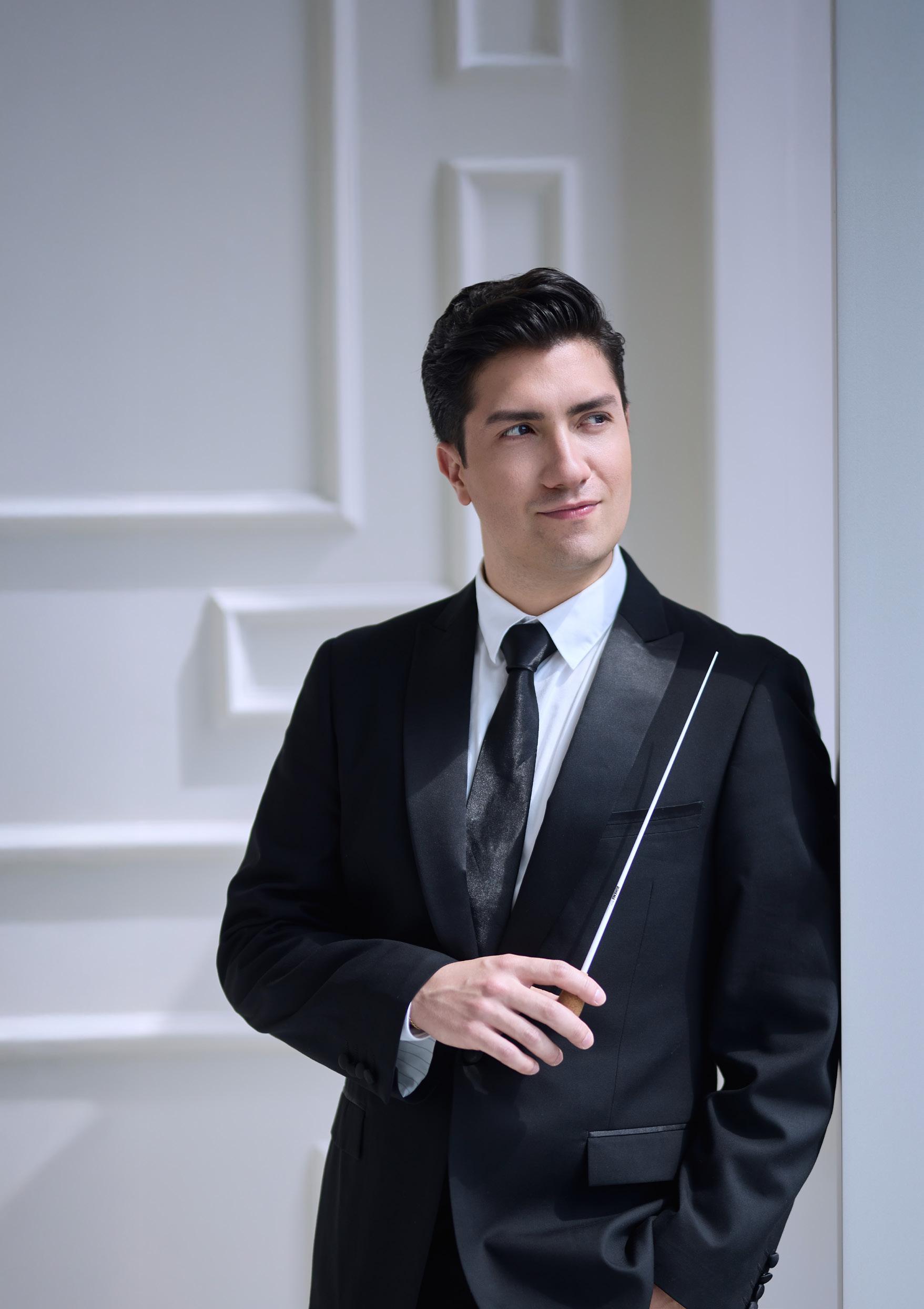

Rodolfo Barráez Associate Conductor
Chloe Chua / Tchaikovsky Violin Concerto dedicated to
President’s
Performers Concert dedicated to
ARTIST HIGHLIGHTS
Yo-Yo Ma, Julia Hagen, Chloe Chua, Leonidas Kavakos, Daniel Lozakovich, Bertrand Chamayou, Eric Lu, Sayaka Shoji, Simon Trpčeski, Yeol Eum Son and Sergei Nakariakov with conductors Han-Na Chang, Joe Hisaishi, Mikhail Pletnev, Masaaki Suzuki and Kahchun Wong.
PROGRAMME HIGHLIGHTS
An Alpine Symphony, The Planets (with a new Earth), Pictures at an Exhibition in two orchestrations, New World Symphony, Scheherazade, Saint-Saëns’s Organ Symphony, and masterpieces by Mahler, Nielsen, Shostakovich and Tchaikovsky.
FEATURING SINGAPORE'S
Ding Yi Music Company, Singapore Chinese Orchestra, Isaac Lee, Churen Li, Lin Chien-Kwan, Lien Boon Hua, Jonathan Shin and many more
Hans Graf Quantedge Music Director
Rodolfo Barráez Associate Conductor
Hannu
Music Director-Designate
Concert Season
25







Aug – Sep 2025
Chloe Chua / Tchaikovsky
Violin Concerto
Thu & Fri, 21 & 22 Aug 2025
Esplanade Concert Hall

Pletnev’s Swan Lake + Trumpet
Concerto / Sergei Nakariakov
Fri & Sat, 29 & 30 Aug 2025
Esplanade Concert Hall
President’s Young Performers Concert
Sat, 20 Sep 2025
Victoria Concert Hall
For the enjoyment of all patrons during the concert:
Please switch off or silence all electronic devices.
Please minimise noises during performance. If unavoidable, wait for a loud section in the music.
Cover photo: Rodolfo Barráez © Crispian Chan 23
Photographs and videos will be taken at these events, in which you may appear. These may be published on the SSO’s publicity channels and materials. By attending the event, you consent to the use of these photographs and videos for the foregoing purposes. 30

No photography, video or audio recording is allowed when artists are performing.
Non-flash photography is allowed only during bows and applause when no performance is taking place.
Go green. Digital programme books are available on www.sso.org.sg.
Singapore Symphony Orchestra
The orchestra performs over 60 concerts a year, and its versatile repertoire spans alltime favourites and orchestral masterpieces to exciting cutting-edge premieres. Bridging the musical traditions of East and West, Singaporean and Asian musicians and composers are regularly showcased in the concert season. The SSO makes its performing home at the 1,800-seat state-of-the-art Esplanade Concert Hall. More intimate works, as well as community performances take place at the 673-seat Victoria Concert Hall, the Home of the SSO.
Since its founding in 1979, the Singapore Symphony Orchestra (SSO) has been Singapore’s flagship orchestra, touching lives through classical music and providing the heartbeat of the cultural scene with its 44week calendar of events.
In addition to its subscription series concerts, the orchestra is well-loved for its outdoor and community appearances, and its significant role educating the young people of Singapore through its school programmes. The SSO has also earned an international reputation for its orchestral virtuosity, having garnered sterling reviews for its overseas tours and many successful recordings. In 2021, the SSO clinched third place in the prestigious Orchestra of the Year Award by Gramophone. In 2022, BBC Music Magazine named the SSO as one of the 23 best orchestras in the world.
From the 2026/27 season, the SSO will be led by Finnish conductor Hannu Lintu, the fourth Music Director in the orchestra’s history after Choo Hoey (1979–1996), Lan Shui (1997–2019) and Hans Graf (2020–2026).
Beyond Singapore, the SSO has performed in Europe, Asia, Australia and the United States. In the 2024/25 season, the SSO performed to full houses at Asia Orchestra Week in Kyoto, Japan, and made its “dazzling – and true-blue – Down Under debut” (Limelight) in Sydney, Melbourne and Brisbane. In May 2016, the SSO was invited to perform at the Dresden Music Festival and the Prague Spring International Music Festival. This successful five-city tour of Germany and Prague also included the SSO’s second performance at the Berlin Philharmonie. In 2014, the SSO’s debut at the 120th BBC Proms in London received praise in major UK newspapers The Guardian and The Telegraph. The SSO has also performed in China on multiple occasions.
The SSO has released more than 50 recordings, with over 30 on the BIS label. Recent critically acclaimed albums include Herrmann’s Wuthering Heights (Chandos) and Scriabin – Poems of Ecstasy and Fire (BIS).
A complete Mozart Violin Concerto cycle with Singaporean violinist Chloe Chua conducted by Hans Graf is released in 2025 on Pentatone.
The SSO also leads the revival and recording of significant works such as Kozłowski’s Requiem, Ogerman’s Symbiosis (after Bill Evans) and violin concertos by Robert Russell Bennett and Vernon Duke.
The SSO has collaborated with such great artists as Vladimir Ashkenazy, Gustavo Dudamel, Charles Dutoit, Joe Hisaishi, Neeme Järvi, Lorin Maazel, Martha Argerich, Diana Damrau, Janine Jansen, Leonidas Kavakos, Lang Lang, Yo-Yo Ma, Mischa Maisky, Gil Shaham, Daniil Trifonov and Krystian Zimerman.
The SSO is part of the Singapore Symphony Group, which also manages the Singapore Symphony Choruses, the Singapore National Youth Orchestra, the Singapore International Piano Festival and the biennial National Piano & Violin Competition.
The Group’s vision is to be a leading arts organization that engages, inspires and reflects Singapore through musical excellence. Our mission is to create memorable shared experiences with music. Through the SSO and its affiliated performing groups, we spread the love for music, nurture talent and enrich our diverse communities.

© JACK YAM
The Orchestra
Hans Graf
Quantedge Music Director
Rodolfo Barráez
Associate Conductor
Choo Hoey
Conductor Emeritus
Lan Shui
Conductor Laureate
Eudenice Palaruan
Choral Director
Wong Lai Foon Choirmaster
Ellissa Sayampanathan
Assistant Choral Conductor
First Violin
(Position vacant) Concertmaster, GK Goh Chair
David Coucheron Co-Principal Guest Concertmaster
Kevin Lin Co-Principal Guest Concertmaster
Kong Zhao Hui1 Associate Concertmaster
Chan Yoong-Han2 Assistant Principal
Cao Can*
Duan Yu Ling
Foo Say Ming
Jin Li
Kong Xianlong
Cindy Lee
Karen Tan
William Tan
Wei Zhe
Ye Lin*
Zhang Si Jing
Second Violin
Sayuri Kuru Associate Principal
Nikolai Koval*
Hai-Won Kwok
Renyu Martin Peh^
Margit Saur
Shao Tao Tao
Wu Man Yun*
Xu Jueyi*
Yin Shu Zhan*
Zhao Tian
Viola
Manchin Zhang Principal, Tan Jiew Cheng Chair
Guan Qi Associate Principal
Gu Bing Jie* Assistant Principal
Marietta Ku
Luo Biao
Julia Park
Shui Bing
Janice Tsai
Dandan Wang
Yang Shi Li
Cello
Ng Pei-Sian Principal, The HEAD Foundation Chair
Yu Jing Associate Principal
Guo Hao Assistant Principal
Chan Wei Shing
Christopher Mui
Jamshid Saydikarimov
Song Woon Teng
Wang Yan
Wu Dai Dai
Zhao Yu Er
Double Bass
Yang Zheng Yi Acting Principal
Karen Yeo Assistant Principal
Po-Yu Fang
Victor Lee
Jacek Mirucki
Wang Xu
Flute
Jin Ta Principal, Stephen Riady Chair
Evgueni Brokmiller Associate Principal
Roberto Alvarez
Miao Shanshan
Piccolo
Roberto Alvarez Assistant Principal
Oboe
Rachel Walker Principal
Pan Yun Associate Principal
Carolyn Hollier
Elaine Yeo
Cor Anglais
Elaine Yeo Associate Principal
Clarinet
Ma Yue Principal
Li Xin Associate Principal
Liu Yoko
Tang Xiao Ping
Bass Clarinet
Tang Xiao Ping Assistant Principal
Bassoon
Guo Siping Principal
Liu Chang Associate Principal
Christoph Wichert
Zhao Ying Xue
Contrabassoon
Zhao Ying Xue Assistant Principal
Horn
Austin Larson Principal
Gao Jian Associate Principal
Jamie Hersch Associate Principal
Marc-Antoine Robillard Associate Principal
Bryan Chong
Hoang Van Hoc
Trumpet
Jon Paul Dante Principal
David Smith Associate Principal
Lau Wen Rong
Nuttakamon Supattranont
Trombone
Allen Meek Principal
Damian Patti Associate Principal
Samuel Armstrong
Bass Trombone
Wang Wei Assistant Principal
Tuba
Tomoki Natsume Principal
Timpani
Christian Schiøler Principal
Mario Choo
Percussion
Jonathan Fox Principal
Mark Suter Associate Principal
Mario Choo
Lim Meng Keh Harp
Gulnara Mashurova Principal
With deep appreciation to the Rin Collection for their generous loan of string instruments. Musician on annual contract.
Kong Zhao Hui performs on a J.B. Guadagnini of Milan, c. 1750, donated by the National Arts Council, Singapore, with the support of Far East Organization and Lee Foundation.
Chan Yoong-Han performs on a David Tecchler, Fecit Roma An. D. 1700, courtesy of Mr G K Goh. Musicians listed alphabetically by family name rotate their seats on a per programme basis.
Guest Musicians
Chloe Chua / Tchaikovsky Violin Concerto
21 & 22 Aug 2025
First Violin
Chen Dawei
Lim Shue Churn
Second Violin
Li Qing Guest Principal
Bobirjon Eshpulatov
Syu Cheng-Yi
Ikuko Takahashi
V iola
Jiang Yukun
Mao Xinguang
Patcharaphan Khumprakob
Cello Wang Zihao
Double Bass
Olga Alexandrova
Guennadi Mouzyka

Oboe
Quek Jun Rui
Percussion
Tan Pei Jie
Harp
Jana Ang Fries
Celesta Beatrice Lin
Pletnev’s Swan Lake + Trumpet Concerto / Sergei Nakariakov
29 & 30 Aug 2025
First Violin
Chen Dawei
Lim Shue Churn
Second Violin
Michael Salm Guest Principal
Bobirjon Eshpulatov
Syu Cheng-Yi
Ikuko Takahashi
Yew Shan
V iola
Jiang Yukun
Mao Xinguang
Patcharaphan Khumprakob
Erlene Koh
Double Bass
Olga Alexandrova
Guennadi Mouzyka
President’s Young Performers Concert 20 Sep 2025
First Violin
Bobur Eshpulatov
Second Violin
Lisa Obert Guest Principal
Lee Shi Mei
Yew Shan
Viola
Patcharaphan Khumprakob
Clarinet
Dai Le Guest Principal
Tuba
Brett Stemple
Percussion
Sng Yiang Shan
Julia Tan

Celesta Beatrice Lin
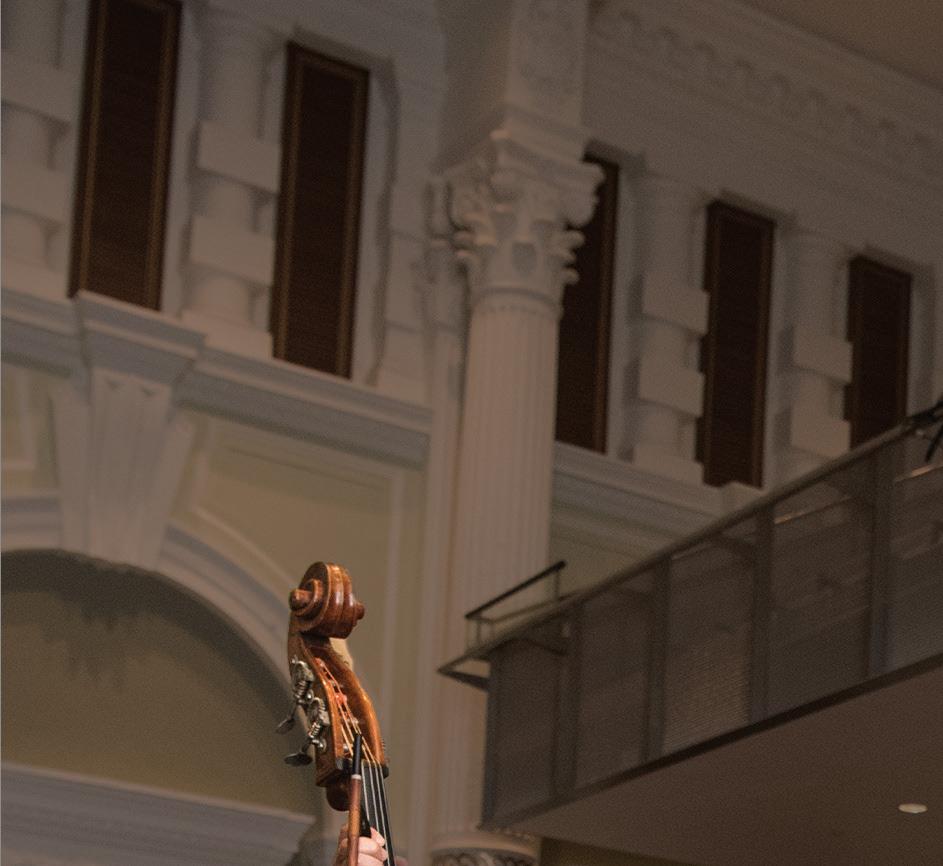


To recognize our donors’ continued support towards the national orchestra, we offer a more personalized way for you to make a mark in the Home of the SSO, with a dedicated plaque on your preferred seat at the Victoria Concert Hall.

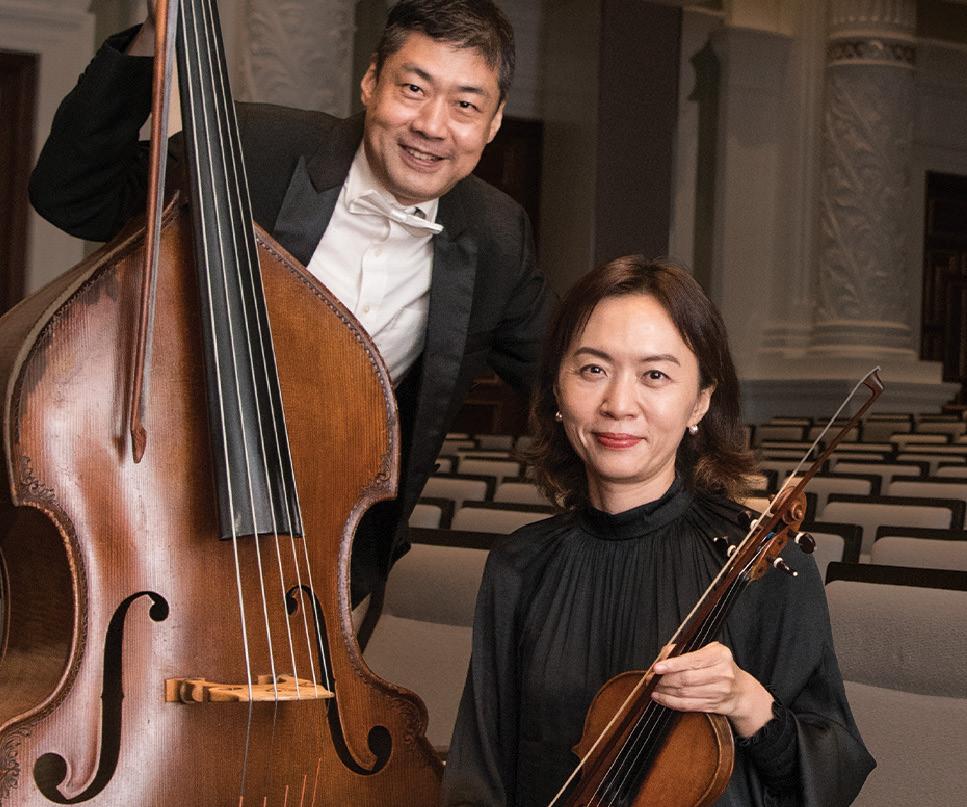

Selected seats are up for adoption in donation tiers of $8,000, $15,000, $25,000*
SUPPORT THE SSO
You help to secure the future of the national orchestra.
You enable the SSO to present more world-class performances at the Victoria Concert Hall.

You support SSO children’s programmes that nurture the next generations’ appreciation of the arts and culture.


For more details, please write to director_development@sso.org.sg Tax deduction of 2.5 times the value of your donation may apply (for tax residents of Singapore). *Patron benefits apply.

Rodolfo Barráez
Associate Conductor
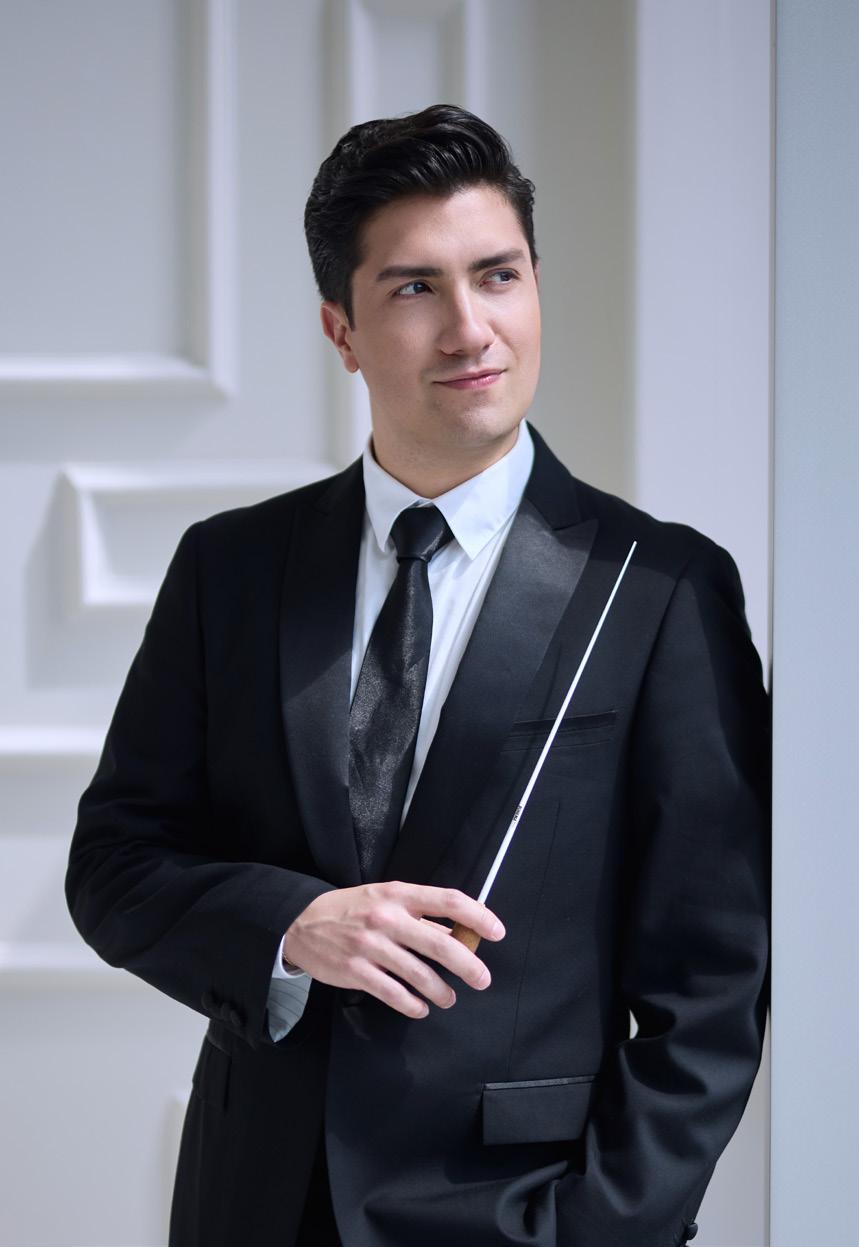
A natural communicator with infectious charisma, Berlin-based Venezuelan conductor, Rodolfo Barráez, brings remarkable vivacity, sensitivity, and zeal to his artistry. The 2025/26 season sees him continue his tenure with both the Singapore Symphony and the Simón Bolívar Orchestra of Venezuela as Associate Conductor.
Awarded first prize at the 2023 Hong Kong International Conducting Competition, previous competition successes include first prize at the 2018 Universidad Nacional Autónoma de México International Conducting Competition (OFUNAM), and second prize at the 2020 Siemens-Hallé International Conductor Competition in Manchester.
Assistant Conductor of the Los Angeles Philharmonic starting in the 2023/24 season, Rodolfo Barráez has collaborated extensively with the Orchestra, conducting them at the Walt Disney Concert Hall and the Hollywood Bowl in performances of Stravinsky’s Firebird Suite and Joshua Bell’s The Elements Project. Rodolfo has also recently conducted the Münchener Kammerorchester on their tour of South America, the Simón Bolívar Orchestra of Venezuela on their tour of China, and the Appassionato Orchestra at the Verbier Festival.
Having completed a Bachelor’s degree in conducting at the Universidad Nacional Experimental de las Artes de Venezuela, Rodolfo also has a Bachelor’s and Master’s degree in conducting from the Hochschule für Musik Hanns Eisler in Berlin. Strongly influenced by his own remarkable education as part of El Sistema under the guidance of José Antonio Abreu and Teresa Hernández, Rodolfo is committed to contributing to music education. In 2019, Rodolfo founded the Falcón Conducting Workshop; an organisation which nurtures and supports the development of emerging conductors through masterclass and workshop series in his hometown as well as worldwide at high renowned institutions.
Chloe Chua / Tchaikovsky
Chloe Chua (b. 2007) shot to international stardom after winning the joint 1st Prize at the 2018 Yehudi Menuhin International Competition for Young Violinists. The young Singaporean star has also won top accolades at the Andrea Postacchini, Zhuhai International Mozart, Thailand International Strings and the Singapore National Piano & Violin Competitions.
Her stunning musicality despite her young age has captured the hearts of audiences around the world, and her performances have taken her to concert halls and orchestras across the U.S.A., U.K., Italy, Germany, Denmark, Saudi Arabia, China, Thailand and Singapore.
Called “one of the most promising young musicians in the world” by PBS’s Great Performances, America’s preeminent multi award-winning performing arts television series, Chloe starred in its season 51 episode Now Hear This – Rising Stars, broadcast in April 2024.
Chloe was Artist-In-Residence of the Singapore Symphony Orchestra (SSO) during their 2022/23 and 2023/24 seasons – the youngest ever to be appointed to this role. Her debut album of The Four Seasons and Locatelli’s Harmonic Labyrinth on the award-winning Pentatone label garnered 1.6 million Spotify streams in its first year. Chloe’s sophomore album Butterfly Lovers and Paganini Violin Concertos was released in 2024, with her complete Mozart Violin Concertos with Hans Graf following in 2025.
At age 4, Chloe began her violin studies at Singapore’s Nanyang Academy of Fine Arts (NAFA) School of Young Talents, honing her skills under the tutelage of Yin Ke. She is currently studying with Kolja Blacher at the Hanns Eisler Berlin.
Chloe performs on a Giovanni Battista Guadagnini, Milan, 1753, on generous loan from the Rin Collection.
Chloe Chua violin
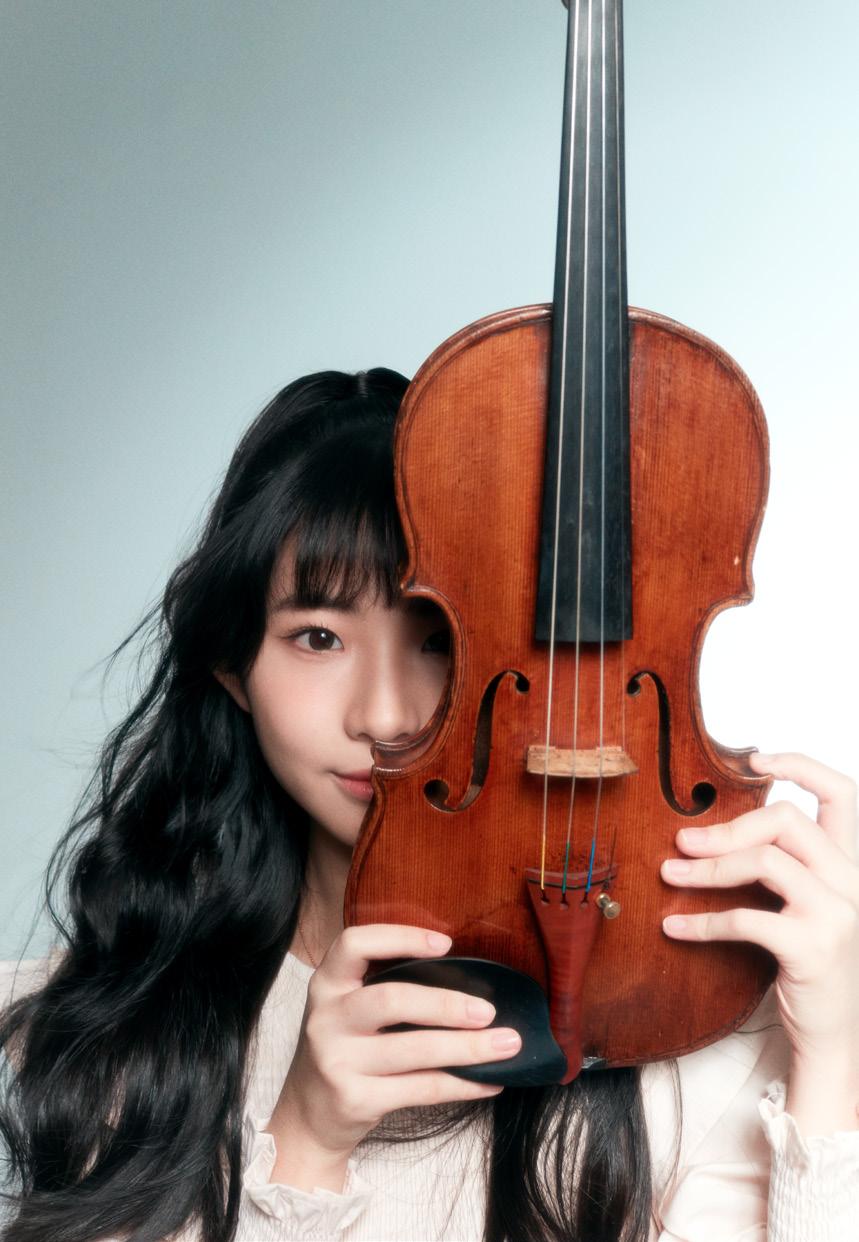
Chua / Tchaikovsky
Mikhail Pletnev
conductor

Mikhail Pletnev is one of the most respected and influential artists of our era. His prodigious talent as a pianist, conductor, and composer has earned widespread acclaim ever since the 1978 Tchaikovsky International Piano Competition, where he won First Prize at the age of 21. An invitation to perform at a 1988 diplomatic summit in Washington led to Pletnev’s friendship with Mikhail Gorbachev and a lifelong commitment to dismantling barriers through the universal language of music.
In 1990, Pletnev formed the Russian National Orchestra (RNO) – the first independent orchestra in Russia’s history. Under his leadership, the RNO achieved recognition as one of the world’s great orchestras. Over thirty years later, Pletnev has renewed his commitment to artistic freedom with his founding of the Rachmaninoff International Orchestra, named after the celebrated pianist, conductor, and composer whose own career inspired audiences from all corners of the globe.
Pletnev’s performances and recordings have shown him to be an outstanding interpreter of an extensive repertoire, both as pianist and conductor. His recordings have earned numerous prizes, including a Grammy Award, the Diapason d’Or, ECHO Klassik Award, Choc du Monde de la musique, and a Gramophone Award.
Pianist, conductor, composer and cultural leader — all are significant facets of Mikhail Pletnev’s remarkable life. Yet with his characteristic humility, he insists that he is, simply, a musician.
Sergei Nakariakov, the Russian-born Israeli trumpet player, has established himself as one of the most sought-after trumpet players on the international stage. Gifted with a rare combination of stunning virtuosity, a suave and velvet-toned sound and a deep sensitivity, he was named “The Paganini of the trumpet” and “Caruso of the trumpet”. He has developed long-standing relationships with many of the world’s most respected leading orchestras, conductors and musicians.
Nakariakov’s season is marked by a series of high-profile concerts. In addition to the world premiere of Mikhail Pletnev’s Concerto for Trumpet, Nakariakov will present his artistic diversity with concerts in Europe, South Korea, Hong Kong, Argentina, Brazil and Japan.
He is an exclusive artist at AR Ressonance with his trumpet. He plays the flugelhorn by Antoine Courtois, Paris.
Sergei Nakariakov trumpet
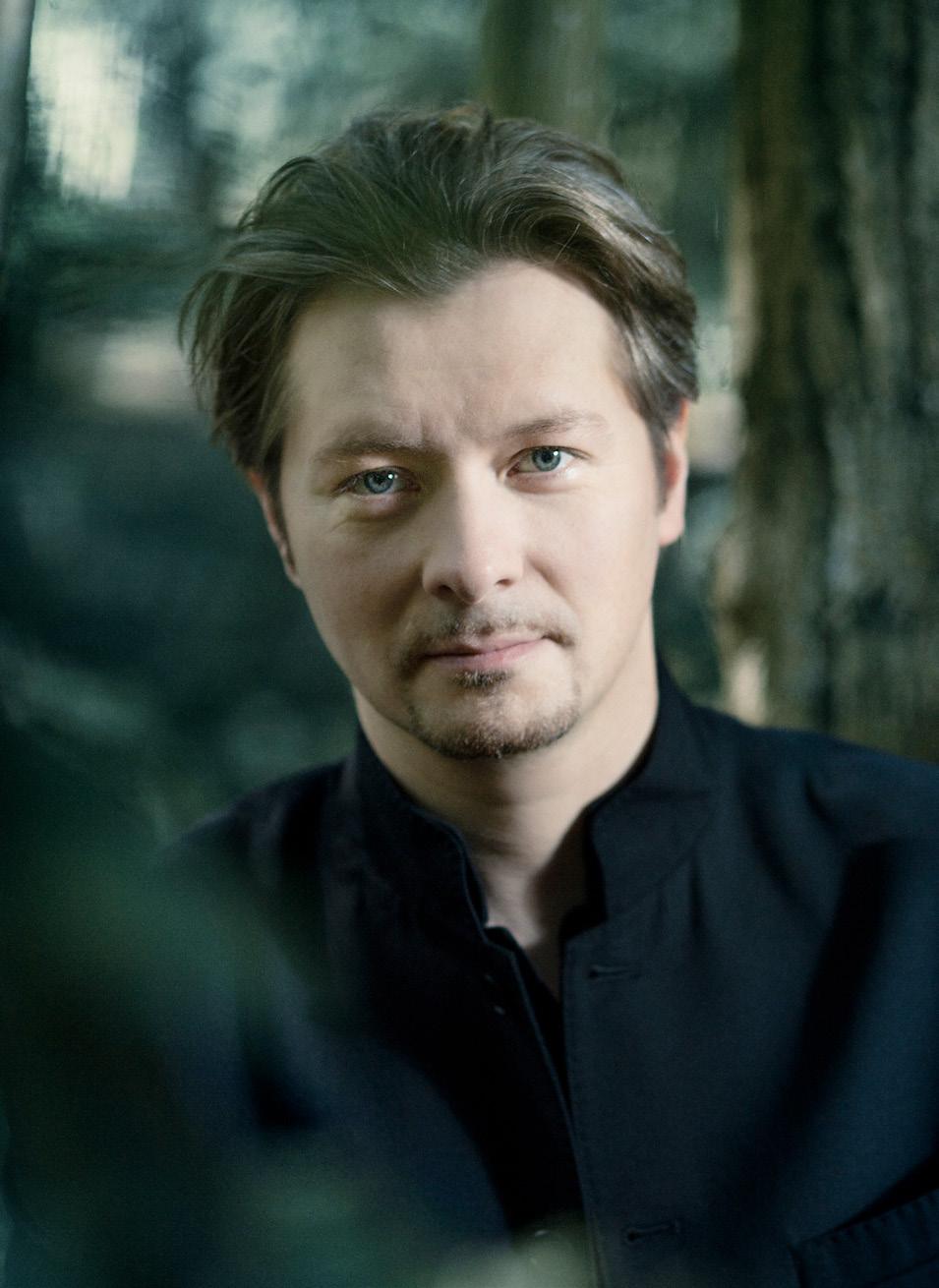
© THIERRY COHEN
Dante Tan Yu Jie
saxophone
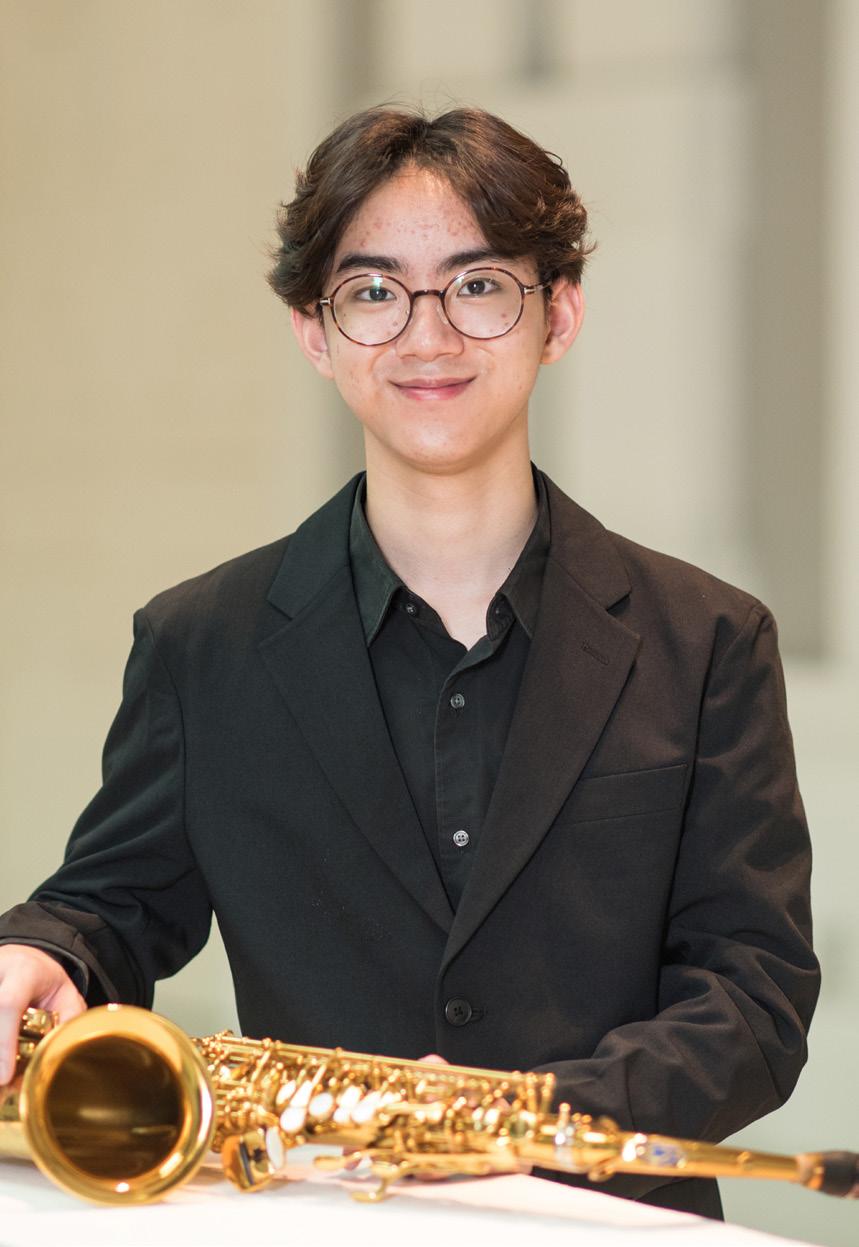
Dante Tan is a saxophonist from Singapore, born on the 28th of February 2007. He started learning the saxophone under Michellina Chan at the age of 14, and is now studying as a first-year in the Nanyang Academy of Fine Arts (NAFA). Dante is also a member of the Sembawang Wind Orchestra (SWO) and Music Elements Saxophone Ensemble (MESE).
Under MESE, Dante has played in the Singapore Saxophone Symposium twice. He started playing the clarinet in Anglo-Chinese School (Independent) in the symphonic band as a Co-Curricular Activity at the age of 13. During his time in secondary school, Dante took part in SYF in 2021 and 2023, achieving the Distinction award along with his fellow band mates. In 2022, the ACSI band took part in the Singapore International Band Festival and won their division with the Silver Award.
As a soloist, Dante took part in the NAFA concerto competition in 2024, and won the preliminary and final rounds.
Born in 2003, Jay Roon first picked up the clarinet when she joined her secondary school’s wind band at 13 years old. Since then, she has maintained a passionate love for music-making. With dreams of becoming an orchestral clarinettist, she has played in numerous festival orchestras overseas, such as Chofu International Music Festival (Japan), and the National Symphony Youth Orchestra (Taiwan), and Rondo Festival (Malaysia).
She is active in the local orchestra scene, playing numerous times in the Orchestra of the Music Makers (OMM), playing staple repertoire pieces such as Rachmaninoff’s Symphony No. 2, Strauss’s An Alpine Symphony, the premiere of Wagner’s Das Rheingold, and many more. She continues to give back to the music groups that have shaped her, playing in groups like Not a Clarinet Choir (NACC) and multiple wind bands.
She has also learnt under many acclaimed clarinettists from masterclasses and individual lessons, such as Nicolas Baldeyrou, Annelien Van Wauwe, Harri Mäki, Florent Héau, Franck Amet, Olivier Patey, Arno Piters, and many more. She is now studying at the Yong Siew Toh Conservatory of Music under artist faculty Ma Yue, and is excited to hone her skills both as an orchestral musician, and as a classical clarinet soloist.
When she is not practising, Jay Roon enjoys listening to true crime podcasts and crocheting.
Chua Jay Roon clarinet
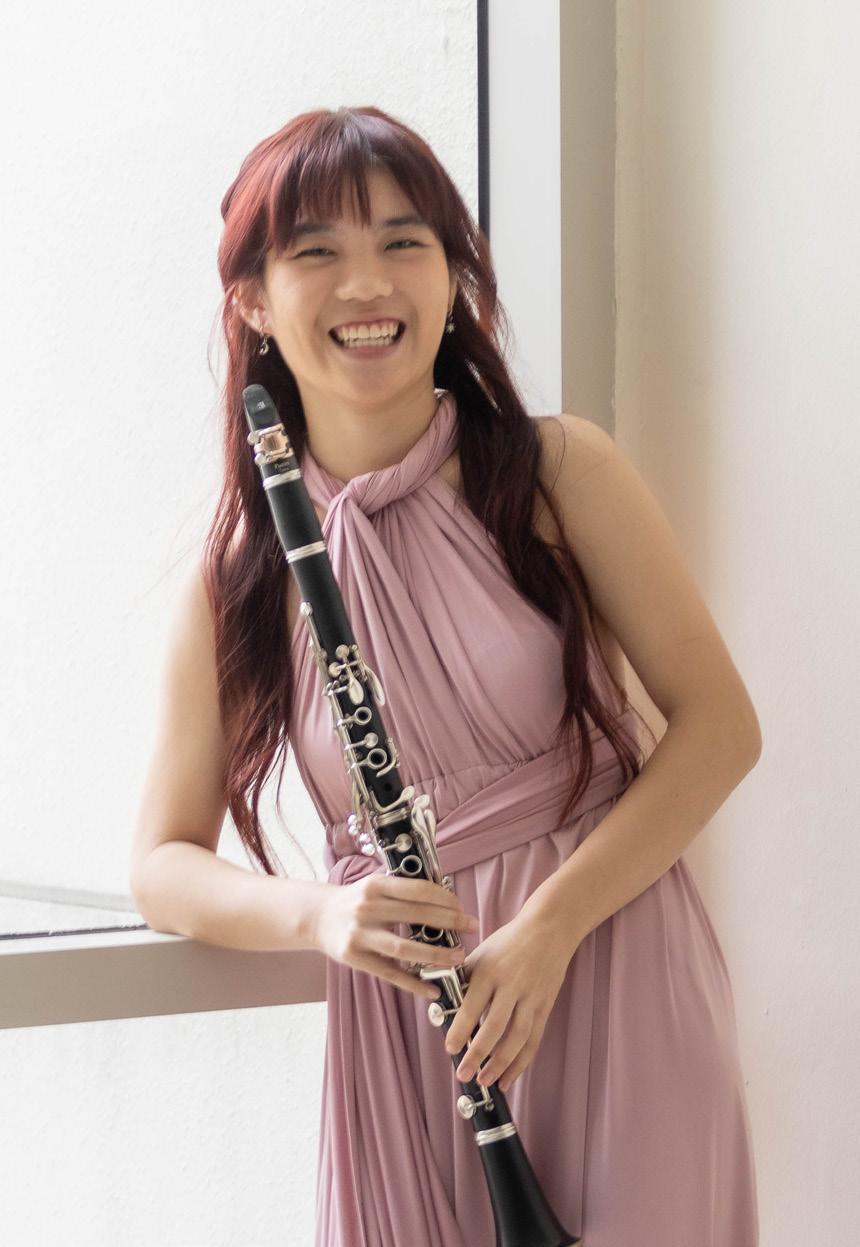
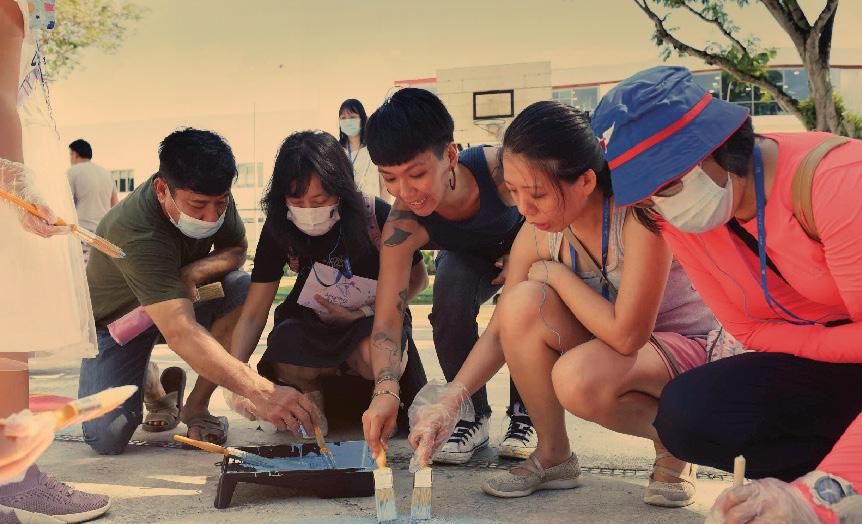
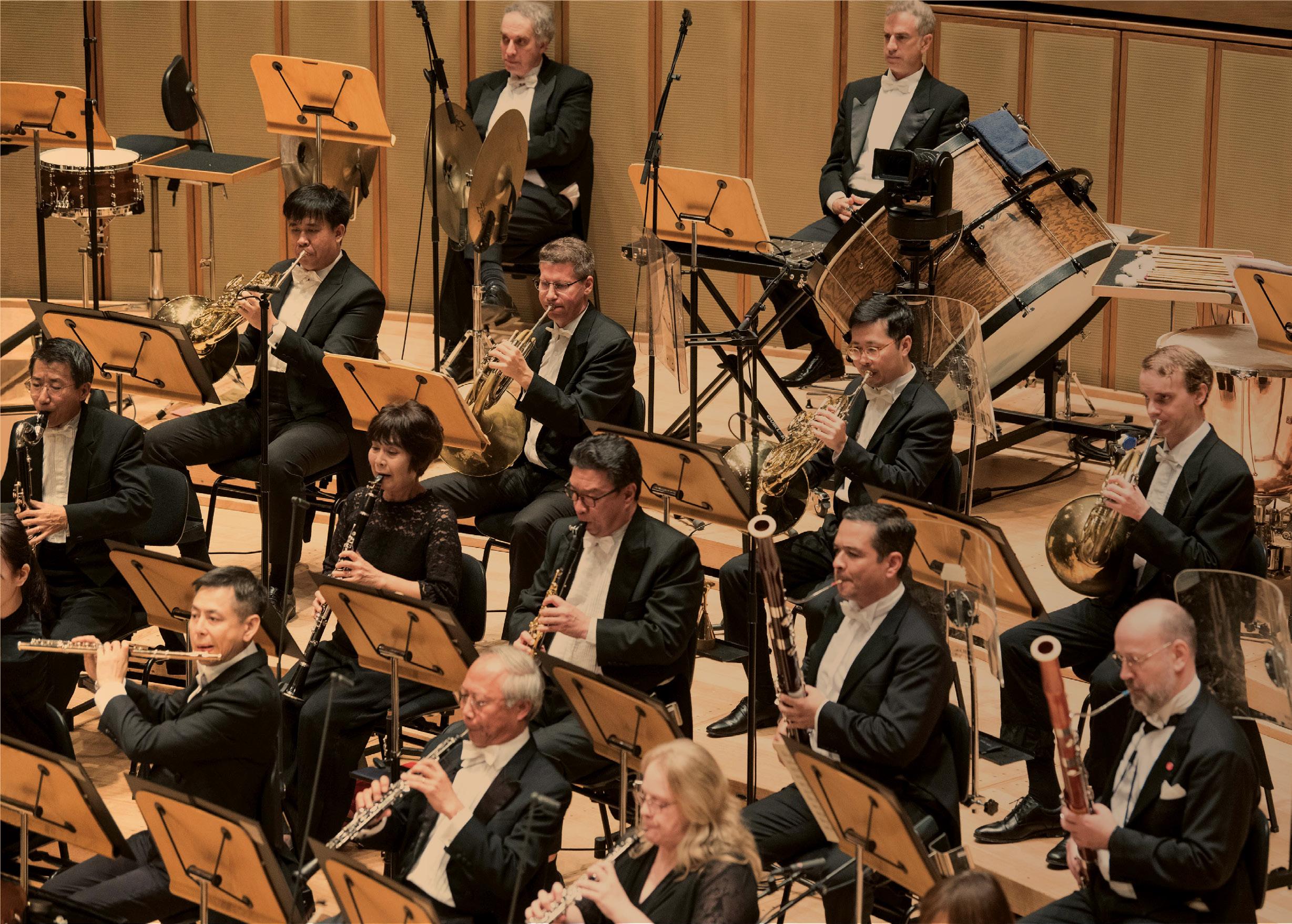
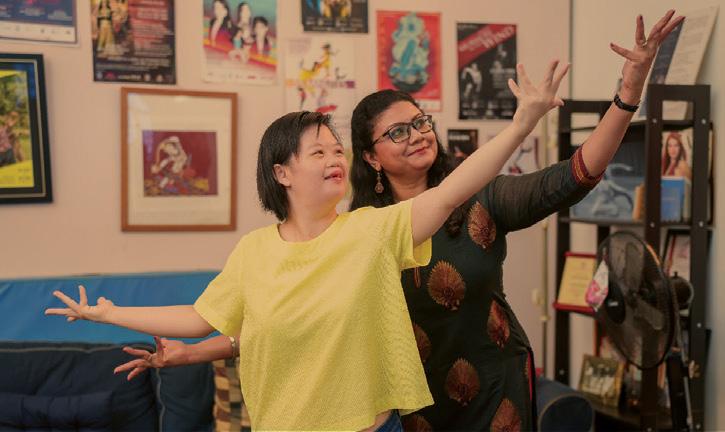



Born in 2006, Renee Yadav is a Temasek Foundation Young Artist Scholar and a recent graduate from the International Baccalaureate Career Programme at School of the Arts, Singapore (SOTA). She started learning the harp at 7 years old and is currently under the tutelage of Ms Katryna Tan of Rave Harps. Passionate and driven, she is one of the most active youth harpists in Asia and has been invited to perform in Hong Kong, Taiwan, Japan, Korea, USA, Wales, France and Italy.
Recently, Renee made waves in the harp scene when she clinched the First Prize at the 2024 Korean International Harp Competition despite being one of the youngest competitors in the 32 years old and under category. Other accolades include winning the First Prize at the 2024 Camac Prize Taiwan and the 8th Félix Godefroid International Harp Competition held in Belgium in 2022. She is also an active participant in the local music scene, winning the Best Performance Award at the 2024 Rave Harps’ International Prestige Award. In addition, Renee made her debut as a soloist in 2024 with the Orchestra of the Music Makers (OMM) after winning the SOTA/OMM Concerto Competition.
Apart from her solo endeavours, Renee performed with OMM throughout their 2024/25 season and has been an active part of Rave Harps’ ensembles and productions. Renee aspires to make the harp more accessible and to share her love for music with the world.
Renee Yadav harp
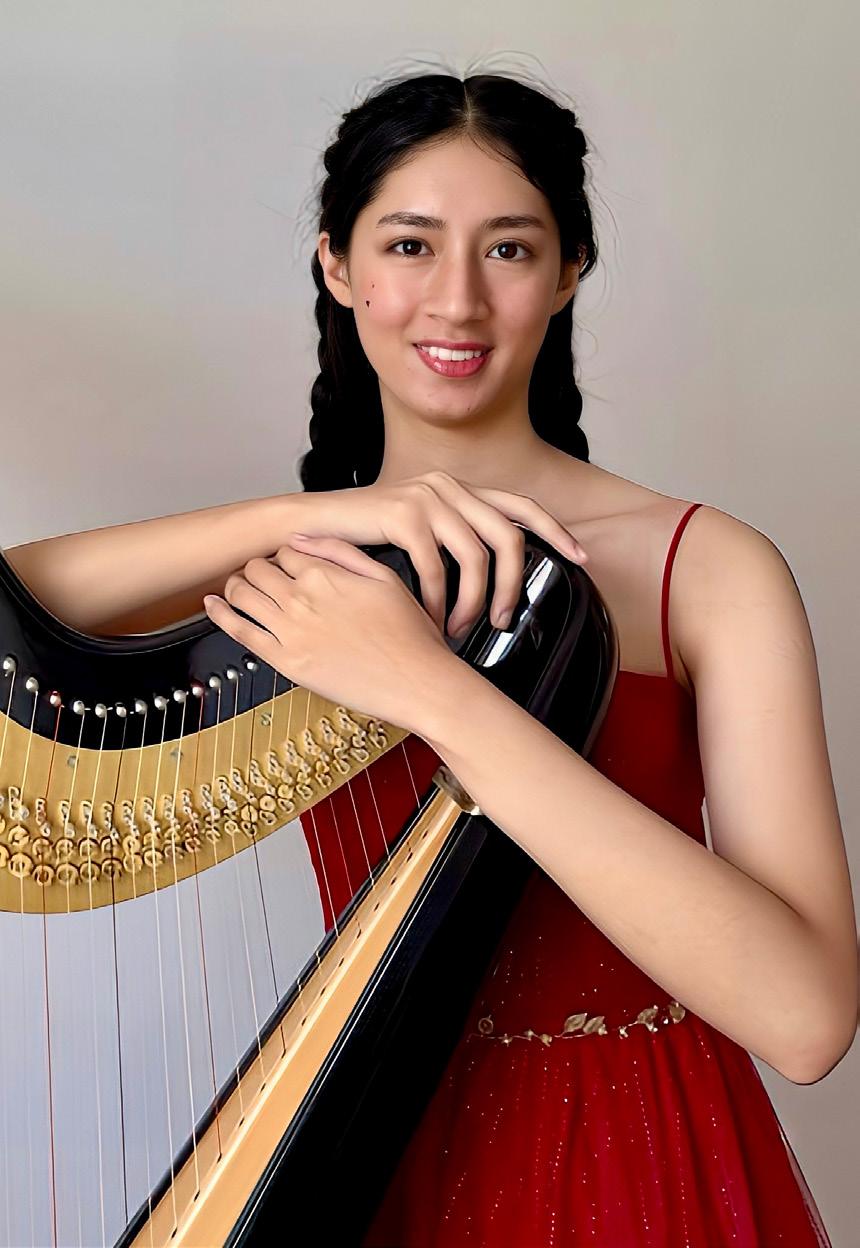
Chloe Chua / Tchaikovsky Violin Concerto
Thu & Fri, 21 & 22 Aug 2025
Esplanade Concert Hall
Singapore Symphony Orchestra
Rodolfo Barráez Associate Conductor
Chloe Chua violin*

Check-in to tonight’s concert
Scan this QR code with the Singapore Symphony Mobile App.
Post-concert Survey
To help us improve your concert experience, we invite you to participate in our survey. After the concert, be the first 120 to show proof of survey completion at the foyer, level 1, to receive a gift.
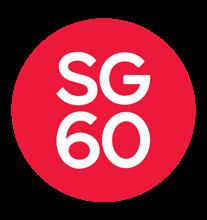
Herrmann
Vertigo Suite 11 mins
Hindemith
Symphonic Metamorphosis of Themes by Carl Maria von Weber 21 mins
Intermission 20 mins
Tchaikovsky
Violin Concerto in D major, Op. 35* 33 mins
Concert Duration: approximately 1 hr 40 mins (including 20 mins intermission)
Dedicated to
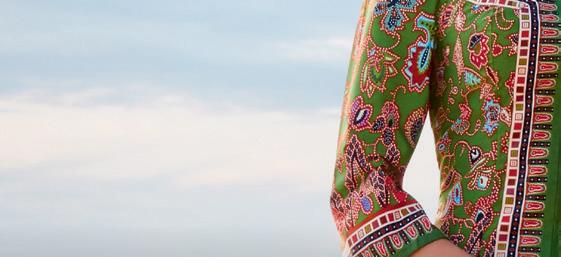



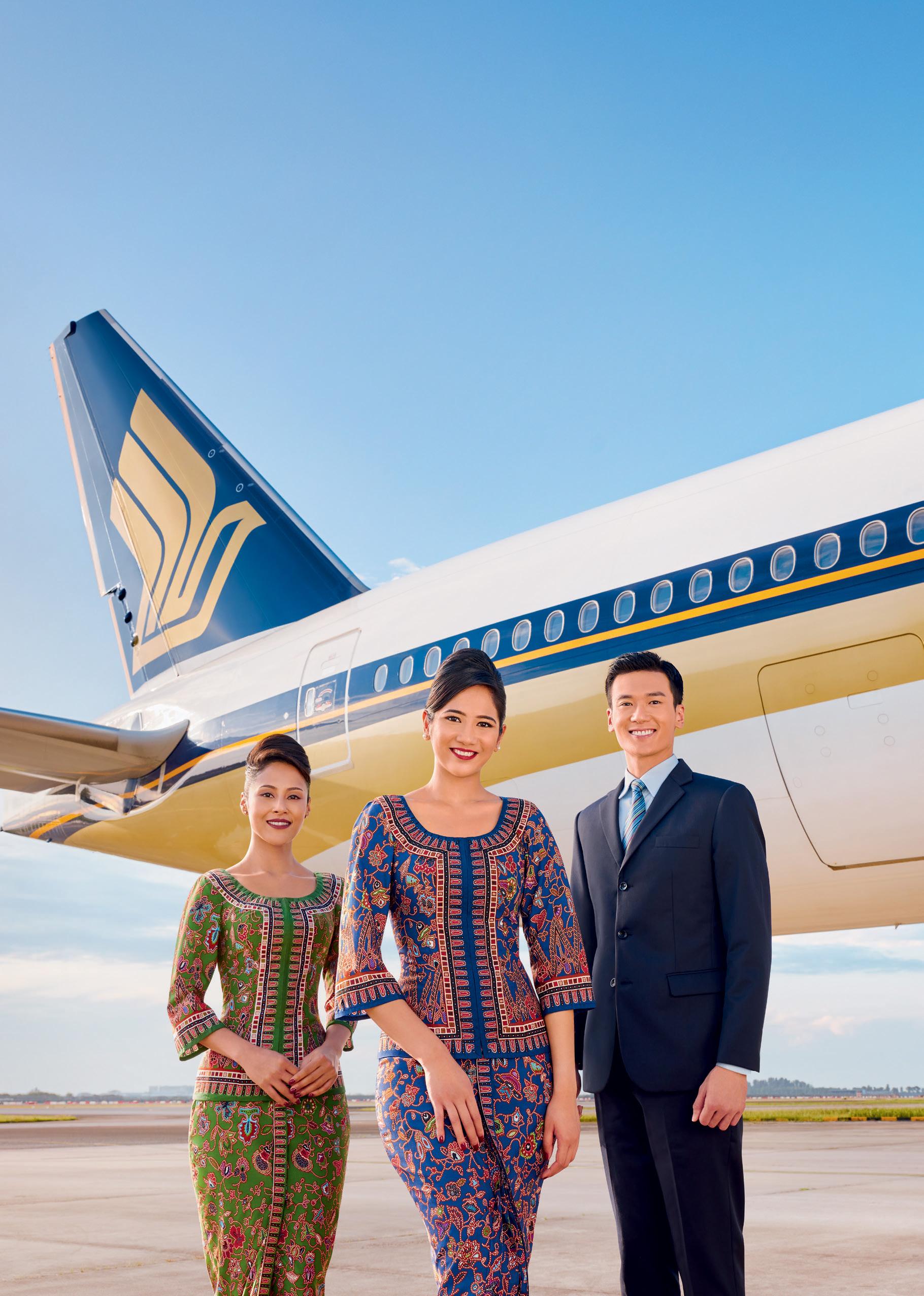





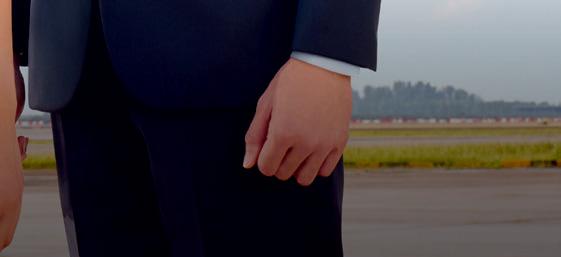





Chloe Chua / Tchaikovsky
Bernard Herrmann
1911 – 1975
Vertigo Suite (1958)
I II III
Prelude
The Nightmare Scéne d’amour
Fear of falling? No, vertigo is something other than fear of falling. It is the voice of the emptiness below us which tempts and lures us; it is the desire to fall, against which, terrified, we defend ourselves.
— Milan Kundera, The Unbearable Lightness of Being (1984)
Kundera’s metaphor might shed light on the irrationality that permeates this magnum opus of Hitchcock–Herrmann collaboration. Hitchcock’s film centres around former detective Scottie, who was recently traumatised by a rooftop accident that led to his colleague’s death. He is hired to follow Madeleine, who seems possessed by her long-dead ancestor Carlotta. As Scottie falls for her, he watches helplessly as she dies of an apparent suicide. Later, he meets Judy, a woman who uncannily resembles Madeleine. Obsessed, he tries to transform Judy into Madeleine—only to discover she had impersonated her as part of a murder plot. When confronted, Judy confesses but still claims to love him. At the site of Madeleine’s death, Judy falls to her own, leaving Scottie cured of his fear of heights but emotionally destroyed.
The Prelude opens with the ‘vertigo’ motif: spiraling arpeggios in the high winds and tremolando strings, punctuated by menacing brass and alternating with otherworldly tinkling from harps and celesta. This blooms into its
full, lush orchestration. The four-note ‘love’ motif is briefly introduced by the brass in a fragmented form alternating with the ‘vertigo’ motif—the line between fear and desire is blurred. Scurrying strings drag Scottie into The Nightmare with its ‘Carlotta’ motif: a furious ostinato on D in habanera rhythm, tambourine, and castanets, a familiar trope used to depict a sensual Spanish woman. In the haunting Scène d’amour, the ‘love’ motif is omnipresent, and Herrmann makes further references in harmony and texture to Wagner’s opera Tristan und Isolde, another tale of obsession that ends in death. Here, Scottie fashions Judy in Madeleine-ish clothes and makeup. The Suite comes to a strangely cheery conclusion, suggesting that in Scottie’s mind, illusion has eclipsed reality.
Instrumentation
3 flutes, 2 oboes, cor anglais, 3 clarinets, 2 bassoons, contrabassoon, 4 horns, 3 trumpets, 3 trombones, tuba, timpani, percussion (triangle, suspended cymbal, tam-tam, castanets, tambourine, vibraphone), harp, celesta, strings World Premiere
First performed by SSO 16 Oct 2015
Paul Hindemith
1895 – 1963
Symphonic Metamorphosis of Themes by Carl Maria von Weber (1943)
Allegro
Andantino March I II III IV
Turandot: Scherzo
The works of Carl Maria von Weber (1786–1826), indisputably the father of German Romantic opera, featured characters who stood for honour, love, and sacrifice. In 1943, as the nation descended into barbarism, Hindemith paid tribute to his predecessor by way of this brilliantly elaborate, playful symphonic suite. Having fled Nazi Germany and accepted a position at Yale’s composition faculty in 1940, he was approached by the choreographer Massine to write a new ballet set to arrangements of Weber’s music, but the project fell through as the dancers found the music too complex. Three years later, to fulfill a commission from the New York Philharmonic, he returned to the material and crafted four distinctive movements that maintain a certain sense of choreography with explosive colour and innovation.
The Allegro is based on No. 4 from Weber’s Huit pièces for piano duet, Op. 60 (1818–19), a set that Hindemith and his wife Johanna would often play together. Here, Hindemith transforms the galant charm of the original into a vigorous, rhythmically accentuated orchestration. The simple theme is made at once pompous and humorous, infused with Hindemith’s trademark neoclassical irony and contrapuntal layering.
In the Scherzo that follows, Weber’s rather simple chinoiserie from his Turandot
Overture (1809) is given a relentless drive by Hindemith’s rhythms, with a selection of ‘oriental’ sounding percussion including tubular bells. In the central section, this little pentatonic ‘Chinese’ tune is given a rollicking jazz treatment in a fugato between winds and percussion, recalling Hindemith’s forays into the swing and ragtime of the early 1920s. Quirky instrumental pairings demonstrate that this was indeed a rare composer who learned to play every standard orchestra instrument competently enough so that he might best utilise their capabilities. No longer a mere rhythmic force, the woodblock and glockenspiel join contrapuntal lines as equals to the strings, and the trombone and bassoon, typically used for weight and grandeur, chime in with precision in burlesque-like staccato lines.
With a swaying tune from Weber’s Six Sonates progressives, Op. 10 (1810), the Andantino functions as a slow movement in the symphonic sense, with a distinctive cantabile theme introduced in the clarinet and later, a countermelody from the flute. The sweeping, lush strokes of the orchestra seem to recall Bruckner’s slow movements, which Hindemith admired greatly.
Coming full circle (and citing another piece from the Op. 60 duets), the Finale is a striding march that dispenses with the mournful character of Weber’s original. It begins with
macabre tones but soon gravitates towards a mood of almost comic excitement. Fanfares bring this suite to a decisive and swaggering end on a quartal tetrachord—four notes built from stacked intervals of fourths, rather than the more familiar thirds of traditional harmony. After Hindemith, this approach became a hallmark of brass writing in many film scores.
Instrumentation
2 flutes, piccolo, 2 oboes, cor anglais, 2 clarinets, bass clarinet, 2 bassoons, contrabassoon, 4 horns, 2 trumpets, 3 trombones, tuba, timpani, percussion (triangle, chimes, cymbals, suspended cymbal, gong, snare drum, tenor drum, bass drum, glockenspiel, tambourine, tom-tom, woodblock), strings
World Premiere 20 Jan 1944, New York
First performed by SSO 9 May 1986
Notes by See Ning Hui | See Ning Hui is a pianist, researcher, and educator passionate about integrating underrepresented composers’ music. She is an adjunct lecturer at UAS-NAFA. Upcoming engagements can be found on www.ninghuisee.com.
Pyotr Ilyich Tchaikovsky
1840 – 1893
Violin Concerto in D major, Op. 35 (1878)
Allegro moderato
Canzonetta: Andante
III
Finale: Allegro vivacissimo
The path to the premiere of Tchaikovsky’s Violin Concerto was fraught with problems: the famous violinist Leopold Auer, the concerto’s initial dedicatee, had cast it aside, deeming it almost impossible to play. Tchaikovsky had then asked his friend the Russian violinist Iosif Kotek to premiere the work, but with Kotek also reluctant to learn it, the dedication eventually went to virtuoso violinist Adolf Brodsky, who managed to persuade Hans Richter and the Vienna Philharmonic to give the concerto its first performance on 4 December 1881, three years after it was written.
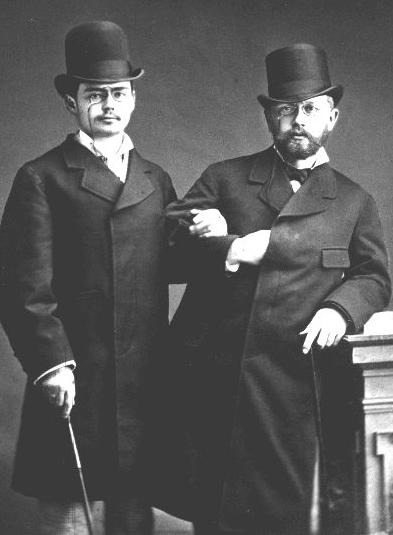
Brodsky practiced hard, but the orchestra was under-rehearsed and thus played the score pianissimo out of uncertainty. While there were mixed reactions to the work at the premiere, most damning of all was none other than Eduard Hanslick’s review in Vienna’s Neue freie Presse, which affected Tchaikovsky so much that he was said to be able to recite the review in the original German until his dying day.
Hanslick remarked that the concerto “moves soberly, musically, and not without spirit. But soon vulgarity gains the upper hand and asserts itself to the end of the first movement. The violin is no longer played; it is pulled, torn, drubbed. The Adagio is again on its best behaviour, to pacify and to win us over. But it soon breaks off to make way for a finale that transfers us to a brutal and wretched jollity of a Russian holiday. We see plainly the savage, vulgar faces, we hear curses, we smell vodka… Tchaikovsky’s Violin Concerto gives us for the first time the hideous notion that there can be music that stinks to the ear.”
Hanslick’s very remarks, especially those berating the ‘Russianness’ of the concerto, were exactly what made it so popular later on. The sweet opening theme by the violins, much like the brusque horn call opening in his Piano Concerto No. 1, is never heard again after the first few bars. The orchestra builds up the anticipation and, after a few brief flourishes, the soloist enters with a tentative, gentle and
Tchaikovsky (right) with violinist Iosif Kotek in 1877.
almost wistful main theme, supported by simple accompaniment in the strings. It is repeated, elaborated, and later on transformed, as if like music for a grand Russian ball, with many opportunities for pyrotechnics involving fast running passages, huge leaps and multiple stops. In between, the second theme, on the warm and lower registers of the violin, retains its wistful nature. The cadenza beautifully links to the recapitulation, with the flute singing the main theme while the violin embellishes with trills above. The violin then takes over after a while, and pulls the whole orchestra to an exhilarating coda.
The Canzonetta (“little song”) is a simple, rustic tune which provides a brief moment of peace between the two exuberant outer movements. Here Tchaikovsky blends the timbres of the woodwinds into a chorale while the violin floats above in a soulful melody. Without a break, this bursts into the lively finale. As if long-tethered and finally released to fly, the solo violin propels forward with a dizzying display of agility and speed. A slower, nostalgic peasant dance is included, but that, too, is soon overtaken, and the movement accelerates to a breathless finish.
Instrumentation
solo violin, 2 flutes, 2 oboes, 2 clarinets, 2 bassoons, 4 horns, 2 trumpets, timpani, strings
World Premiere 4 Dec 1881, Vienna
First performed by SSO 23 May 1980 (Igor Politovsky, violin)
Notes by Natalie Ng | Natalie Ng is a music history geek who plays music, dances to music, and tells stories about composers and their music in her writing.
Pletnev’s Swan Lake + Trumpet Concerto / Sergei Nakariakov
Fri & Sat, 29 & 30 Aug 2025
Esplanade Concert Hall
Singapore Symphony Orchestra
Mikhail Pletnev conductor
Shostakovich
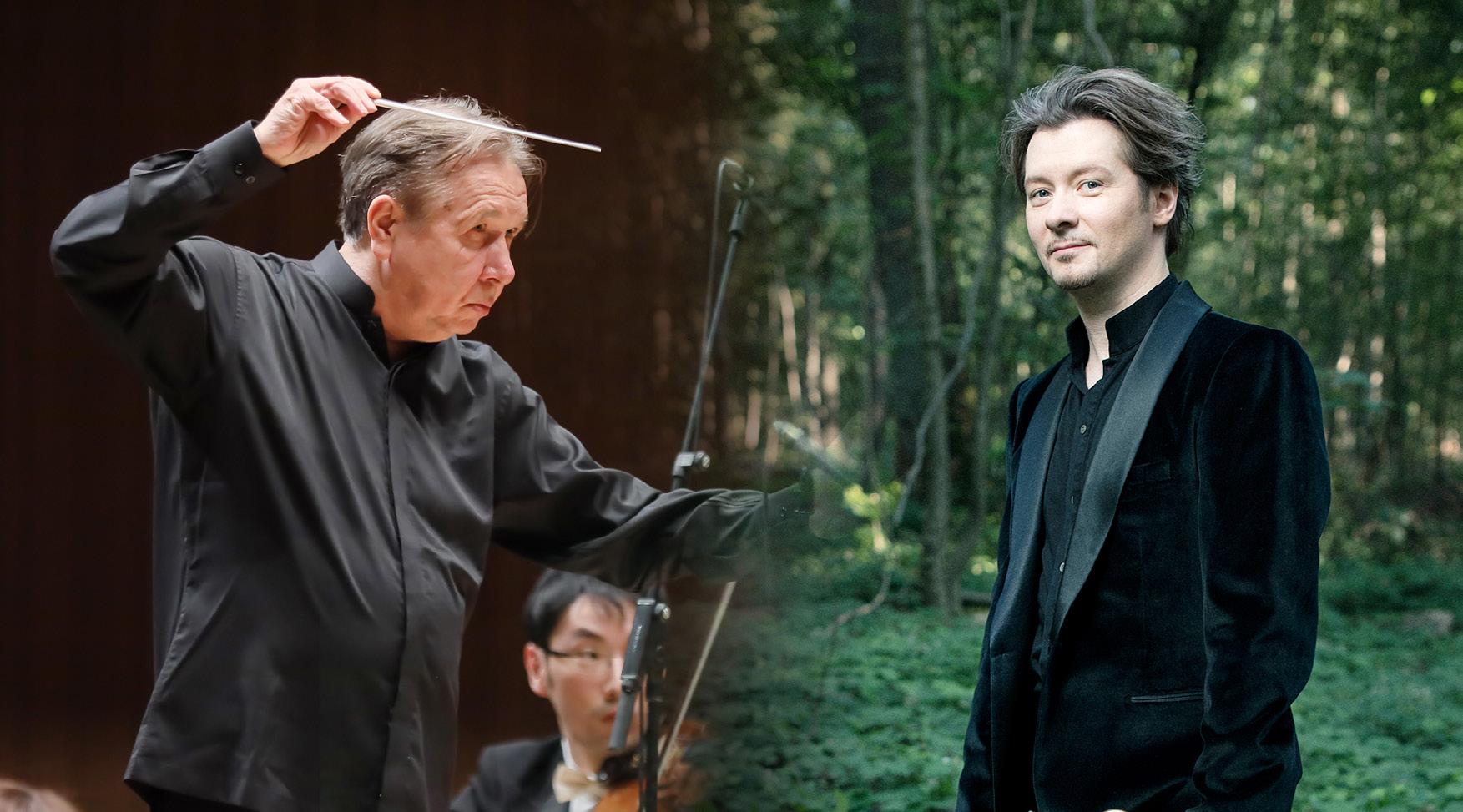
Sergei Nakariakov trumpet*

Festive Overture, Op. 96 7 mins
Pletnev
Trumpet Concerto* 25 mins
SINGAPORE PREMIERE
Intermission 20 mins
Tchaikovsky
Swan Lake Suite (arr. Pletnev) 43 mins
Concert Duration: approximately 1 hr 50 mins (including 20 mins intermission)
Check-in to tonight’s concert
Scan this QR code with the Singapore Symphony Mobile App.
Dmitri Shostakovich
1906 – 1975
Festive Overture, Op. 96 (1954)
In 1954, when the organisers of a Bolshoi Theatre concert marking the 37th anniversary of the October Revolution found themselves without an opening piece, Shostakovich was contacted in a hurry. Tales of its provenance vary, with anecdotes claiming that it was written in just a few hours or a few days. Evidence points to the overture being a reworking of a piece written in 1947, which explains the speediness with which it was completed. Shostakovich was quoted as such on 29 August 1947: “In this work I seek to convey the mood of a man who has gone through the tribulations of the war years and, after defeating the enemies of his Motherland, is now engaged in the reconstruction of his country. I want to embody in musical terms the pathos of peace-time labour on the construction sites of the new Five-Year Plan. The overture does not contain sharp dramatic conflicts. Its themes are melodious, its orchestral techniques varied.” In light of the death of his nemesis Joseph Stalin on 5 March 1953 and the subsequent easing of artistic censorship known as the Khrushchev Thaw, this overture could alternatively be interpreted as a kind of relief.
The loyalist music critic Lev Lebedinsky called it a “brilliant effervescent work, with its vivacious energy spilling over like uncorked champagne”. Shostakovich clearly took inspiration from Glinka’s overture to his opera Ruslan and Lyudmila in the combination of astonishing orchestral virtuosity with death-defying speed. The opening brass fanfare recycles the theme from ‘Birthday’, the final piece from Children’s Notebook, Op. 69 (1945), composed for his daughter Galina. The overture balances itself between two ideas: the first is a jovial clarinet theme that is taken up by the woodwinds and strings in perpetual motion, the second is a broader lyrical theme emerging in the solo horn. Pizzicato strings lead us back to the fanfare, now dashing at breakneck speed in variation form. Unambiguously festive and without the usual ideological baggage of Shostakovich’s orchestral works, this overture was featured at the 1980 Moscow Olympics and now enjoys outings at fireworks spectaculars the world over.
Instrumentation
“brilliant effervescent work, with its vivacious energy spilling over like uncorked champagne” — Lev Lebedinsky.
2 flutes, piccolo, 3 oboes, 3 clarinets, 2 bassoons, contrabassoon, 4 horns, 3 trumpets, 3 trombones, tuba, timpani, percussion (triangle, cymbals, suspended cymbal, snare drum, bass drum), strings
World Premiere
6 Nov 1954, Moscow
First performed by SSO
3 May 1986
Mikhail Pletnev
b. 1957
Trumpet Concerto (2024)
The trumpet concerto has had an uneven history. Baroque exponents like Torelli and Telemann displayed the brilliance of the natural trumpet. Haydn’s Trumpet Concerto in E-flat (1796), written for the newly invented keyed trumpet, remains the high point, and it has now been co-opted as the cheerfully macabre ‘wake-up call’ in Squid Game. In the Romantic era, as strings and piano embodied the concerto’s expressive ideals, the trumpet—less suited for sustained lyricism—was relegated to orchestral and military roles. Only with the advent of fully valved trumpets and the influence of jazz did composers return to the form in earnest, with notable contributions from Tomasi (1948) and Arutunian (1950). Pletnev’s Trumpet Concerto, performed tonight by its dedicatee Sergei Nakariakov, is scored for the brighter, more open C trumpet rather than the usual B-flat. It is scored for an unusually compact chamber orchestra where the strings rarely drive momentum, while pitched percussion often takes melodic prominence.
The Moderato unfolds in a carnivalesque manner around three distinct themes. Pletnev dispenses with conventional transitions or developments and lets each idea proceed as a selfcontained episode. The first struts pompously yet comically, with strings
transforming it into an ostinato beneath a chromatic flute countermelody that unfurls downward. The second theme is a four-note, staccato rising figure. With a dancelike lilt, the third theme curls upwards with a sense of wonder. Curiously, a faux ‘fanfare’ appears twice but in the strings, a playful subversion of the trumpet’s ceremonial role. The movement closes with a hint of a children’s song.
With a bold trumpet proclamation and tense tremolo strings, the Adagio opens in B-flat minor with an emotional heft typical of Romantic opera tragedies. Subtle horror motifs from the strings add an unsettling edge. Amidst the depth and dignity, the children’s song returns twice, each marking the one-third and two-third points and serving a similar humorous function as the faux fanfare of the Moderato. A powerful stroke from the timpani sets the Allegro off to a swashbuckling start. In brief moments of contrast, the flute, bassoon, and trumpet recall a lyrical refrain from the first movement. The soloist gradually builds momentum with cascading arpeggios and lip trills. At the climax, a dashing trumpet cadenza soars above the strings in a frenzied reference to the Russian folksong Korobeiniki (“The Peddlers”)— better known in its arcade-tune form as the Tetris theme. After a momentous pause, the concerto’s only true fanfare
Pletnev’s Swan Lake + Trumpet
Nakariakov
for trumpet sounds. It concludes with an unfinished, quirky motif that, though seemingly out of place, harmonically leads into Pletnev’s 14 Mémoires musicales, which follows on the same album where this concerto had its premiere recording.
Instrumentation
solo trumpet, flute, bassoon, timpani, percussion (triangle, cymbals, snare drum, temple blocks, tom-tom, xylophone), strings
World Premiere 27 Jun 2025 (album)
Trumpet
Pyotr Ilyich Tchaikovsky
(arr. Mikhail Pletnev) 1840 – 1893
Swan Lake Suite (1876)
Moderato assai
Allegro
Moderato assai
Allegro moderato
Andante con moto
Allegro agitato
Before Swan Lake, ballet music was often built from simple airs. With his first ballet score, Tchaikovsky bestowed the genre with symphonic richness, thematic sophistication, and a depth of characterisation rarely heard on the stage. At its 1877 premiere, some listeners deemed it ‘undanceable’, though it was likely the unfortunate meddling of the producers in making unsuitable cuts and inserts that obscured the work’s cohesion. Today, Swan Lake is regarded as the quintessential ballet
score. Pianist, conductor and composer Mikhail Pletnev has assembled his own suite consisting of six numbers.
Drawn from the ballet’s introduction, the Moderato assai evokes malevolence, mysticism, and tragedy surrounding the lake. The oboe introduces the famous Swan motif. A cymbal crash and fiery orchestra tutti signals the evil Rothbart, who has cast a spell on the princesses that transforms them into swans
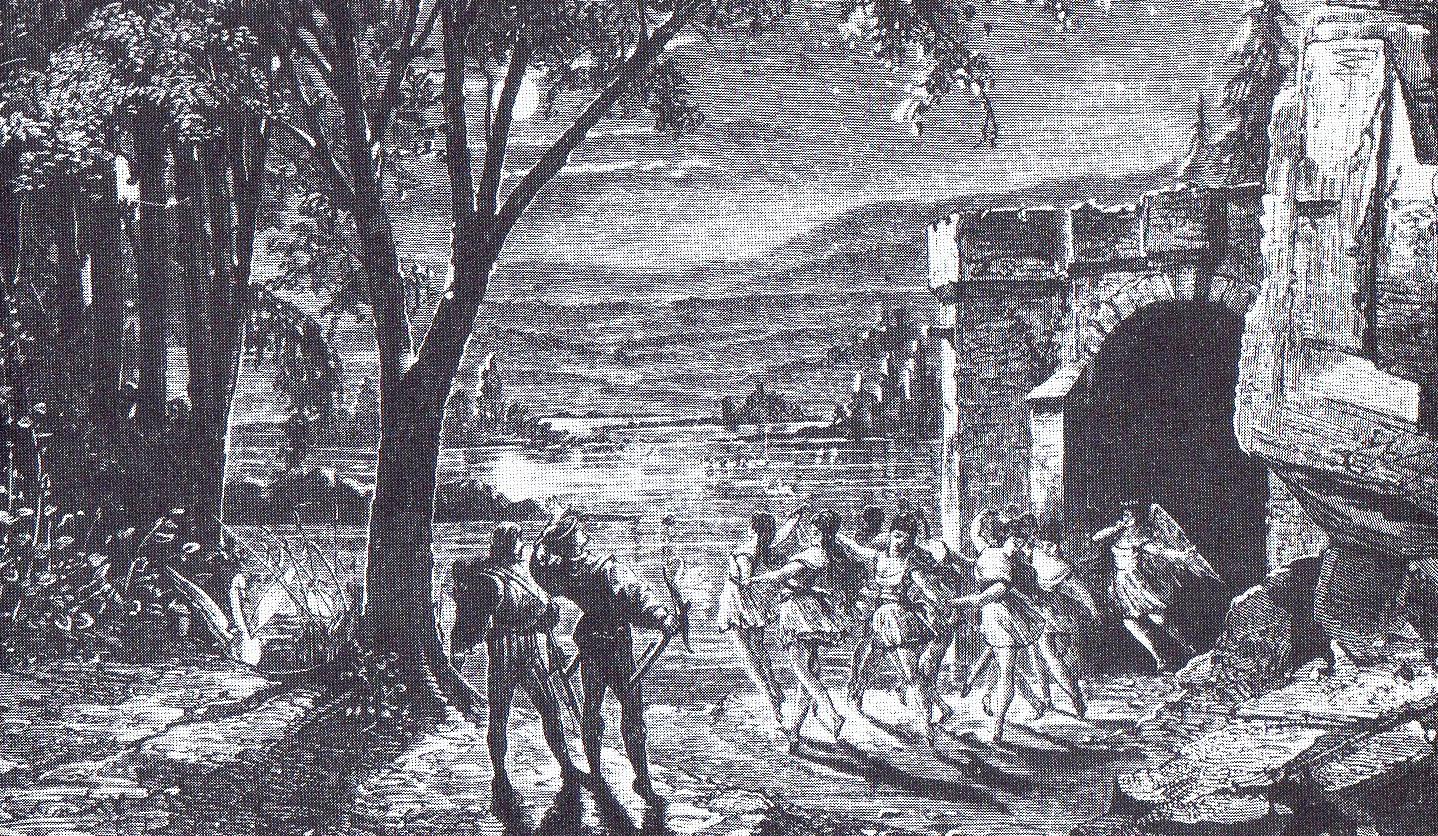
Design by Frédéric de Haenen for the décor of Act 2, Moscow, 1877.
Pletnev’s Swan Lake + Trumpet Concerto / Sergei Nakariakov | 29 & 30 Aug 2025
by day. A moment of quiet follows, then the music turns festive as the curtains rise on Act I. Trumpets herald the grand forest and a castle as Prince Siegfried celebrates his coming of age. Cast in luminous woodwinds and strings and with no hint of impending doom, the Allegro is an easygoing pas de trois. The next Moderato assai introduces Act II with the tremolo strings and harp evoking the moonlit lake as the Swan motif descends from the oboe to horns, bassoons, and finally double basses before disappearing into the shadows. Pletnev’s suite then returns to Act I with the Dance with Goblets, set to a polonaise rhythm amidst playful woodwinds and a glittering celesta.
In the Allegro moderato, Prince Siegfried meets Odette, Queen of the Swans, as she appears to him in human form. They dance together with a mix of wonder and caution in a pas de deux with violin and cello solos—poised and hesitant at first, then closing as a duet. We return to court in the Andante con moto, where six princesses each perform a national dance in hopes of marrying the Prince. Prince Siegfried entertains them all but eagerly awaits Odette. As the brass solos grow anguished and the strings stir up a storm, Prince Siegfried falls for Rothbart’s deception and declares that he will marry his Odile, who has attended the ball disguised as Odette. The Allegro agitato draws on the grand finale of Act IV. Siegfried outwits Rothbart and, with Odette, pledge their undying love by drowning. With their death, Rothbart’s spell is broken.
Instrumentation
2 flutes, piccolo, 2 oboes, 2 clarinets, 2 bassoons, 4 horns, 2 trumpets, 2 cornets, 3 trombones, tuba, timpani, percussion (triangle, cymbals, tam-tam, snare drum, bass drum, glockenspiel), harp, strings
World Premiere (Ballet) 4 Mar 1877, Moscow
First performed by SSO 11 Jul 1980
Notes by See Ning Hui | See Ning Hui is a pianist, researcher, and educator passionate about integrating underrepresented composers’ music. She is an adjunct lecturer at UAS-NAFA. Upcoming engagements can be found on www.ninghuisee.com.

The Singapore Symphony Children’s Choir (SSCC) trains young voices aged 8 to 14 (born between 2011 and 2017) in vocal technique, music literacy, and musicianship, offering opportunities to perform and grow musically.
Grow your confidence, level up your skills, and shine on Singapore’s grandest stages!

Audition Details
Date: 28 Sep 2025
Fee: $25 per participant
Registration closes: 20 Sep 2025
Audition timeslots will be assigned at a later date. Learn more sso.org.sg/sscc-auditions

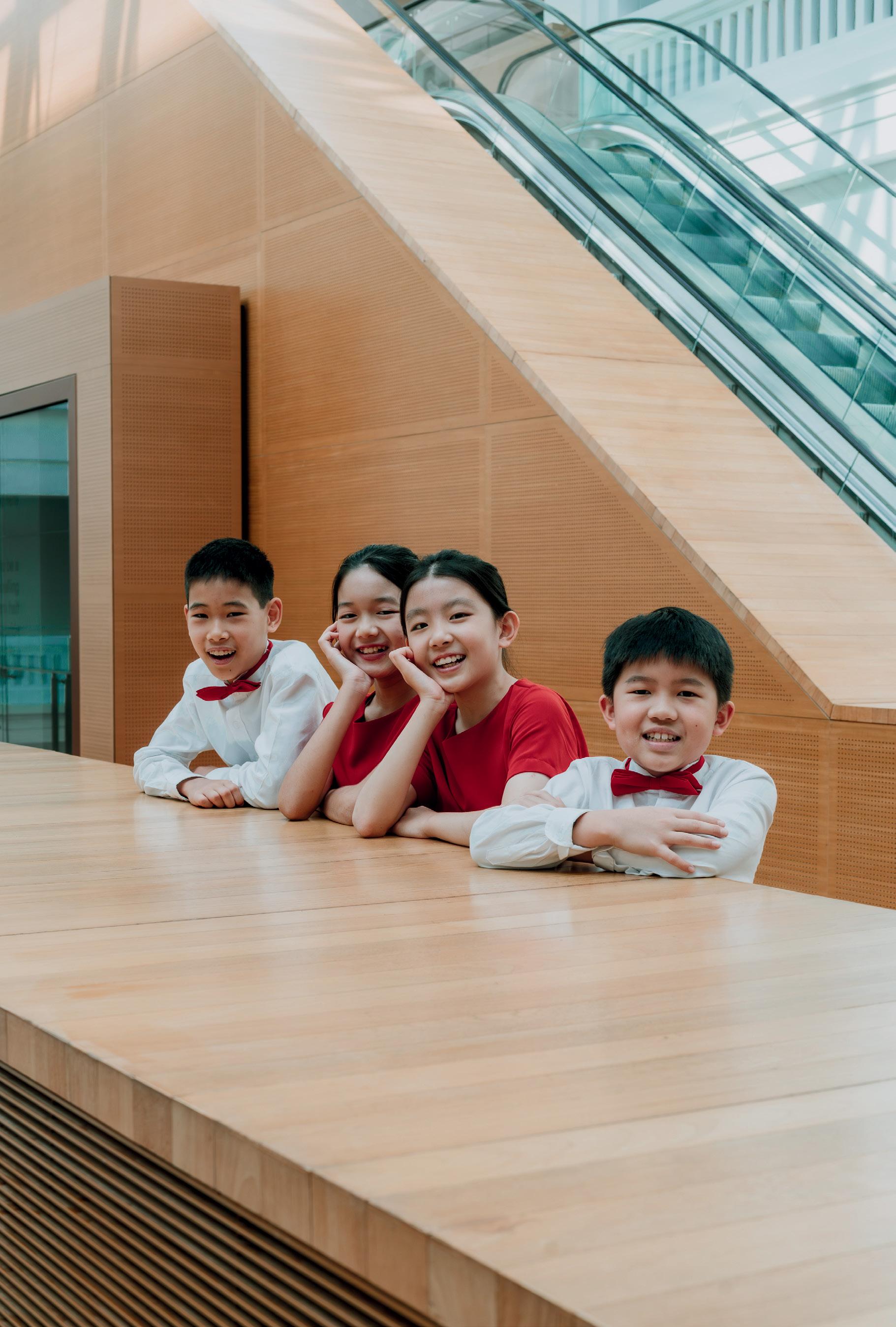

President’s Young Performers Concert
Sat, 20 Sep 2025
Victoria Concert Hall
Singapore Symphony Orchestra
Rodolfo Barráez Associate Conductor

Tomasi
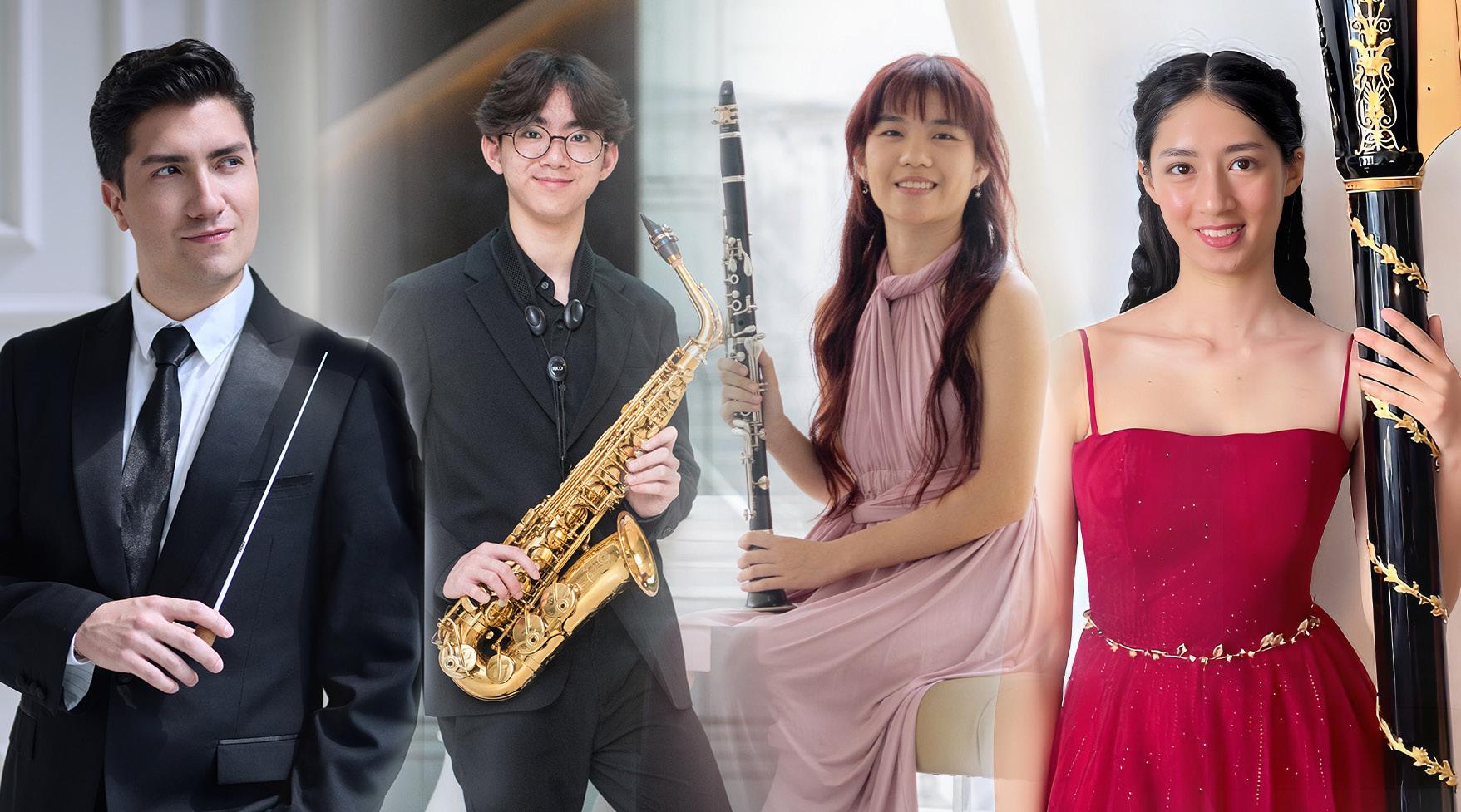
Dante Tan Yu Jie saxophone
Chua Jay Roon clarinet
Renee Yadav harp

Dedicated to
Saxophone Concerto
19 mins
PREMIERE
Nielsen
Clarinet Concerto, Op. 57 24 mins
Intermission
20 mins
Debussy
PREMIERE
Danses sacrée et profane for harp and strings 9 mins
Mendelssohn
Symphony No. 4 in A major, Op. 90 “Italian” 27 mins
Concert Duration: approximately 2 hrs (including 20 mins intermission)
Check-in to tonight’s concert
Scan this QR code with the Singapore Symphony Mobile App.
Message from Mediacorp Symphony 924
This evening, the spotlight shines on Singapore’s brightest rising stars in classical music.
In our continued commitment to the arts, Singapore’s only classical music station, Mediacorp Symphony 924, together with our long-time partner, the Singapore Symphony Orchestra (SSO), is proud to present the President’s Young Performers Concert.
In a celebration of youthful talent and musical brilliance, three exceptional young musicians – saxophonist Dante Tan, clarinetist Chua Jay Roon, and harpist Renee Yadav – take the stage in a stunning showcase of artistry and expression.
Leading the orchestra is SSO Associate Conductor Rodolfo Barráez, whose dynamic presence and thoughtful interpretation will guide the evening’s richly layered programme.
The concert opens with the bold, expressive intensity of Tomasi’s Saxophone Concerto, followed by the inventive flair of Nielsen’s Clarinet Concerto, Op. 57. After the intermission, be swept away by the ethereal beauty of Debussy’s Danses sacrée et profane for harp and strings, before the evening draws to a close with the warmth and radiance of Mendelssohn’s Italian Symphony
We invite you to be moved, uplifted and inspired by the passion and promise of Singapore’s next generation of classical musicians.
Simone Lum Head for Growth & Audio, Mediacorp
Henri Tomasi
1901 – 1971
Saxophone Concerto (1949)
Andante–Allegro
Giration-Final: Allegro–Vif–Largo I II
Of Corsican heritage, the prolific French composer and conductor Henri Tomasi was born in Marseille. Although he dreamt of becoming a sailor, he was enrolled in the Conservatoire de Musique de Marseille at seven years old, where he attained First Prizes for theory, piano and harmony. The outbreak of World War I delayed his entrance into the Paris Conservatoire, so he played the piano in hotels, restaurants, brothels and cinemas in Marseille to earn money. He continued with such work after moving to Paris in 1921 for his studies, despite receiving study grants from the city of Marseille and a benefactor.
In 1927, Tomasi won a Premier Second Grand Prix de Rome for his cantata and a First Prize for conducting. He kickstarted his conducting career with the Concerts du Journal, the small radio orchestra of the Parisian newspaper Le Journal. Other orchestras he subsequently worked with include the Radio-Colonial Orchestra (established by one of France’s first radio stations) and the Monte Carlo Opera. However, Tomasi retired from conducting around 1956 due to increasing deafness in his right ear and a desire to concentrate on composition. He composed widely across various genres including opera, ballets, orchestral and
chamber music, incorporating influences from diverse sources like traditional Corsican songs, jazz, and music from French Indochina.
The Concerto for Alto Saxophone was conceived as an exam piece for the Paris Conservatoire in 1949. It is dedicated to the French saxophonist Marcel Mule, who premiered the work in March 1950 with Tomasi himself conducting. Mule had premiered Tomasi’s Ballade (1938) for alto saxophone and orchestra and was the saxophone instructor at the Paris Conservatoire starting in 1944.
The opening lyrical and melancholic Andante section of the first movement of the concerto soon transitions to the Allegro section predominantly in 5/4 rhythm, which features fragments of the introduction’s themes transformed to assume a more assertive character. Following the saxophone’s substantial cadenza, the movement gains momentum as it builds to a frenzy before closing with a reprise of the introductory material.
Living up to its title ‘Giration’, the second movement is dominated by rapid, swirling motifs. Syncopation, changing meters and the aforementioned motifs contribute to the movement’s persistent rhythmic
drive. Even during the saxophone’s more lyrical solos, the orchestra maintains the energy.
Tomasi unifies the piece by reintroducing the expansive melody from the preceding movement’s opening, whereby the melody’s second appearance leads the work to its grand conclusion.
Instrumentation
solo saxophone, 3 flutes (1 doubling on piccolo), 2 oboes, cor anglais, 2 clarinets, bass clarinet, 2 bassoons, contrabassoon, 4 horns, 3 trumpets, 3 trombones, tuba, timpani, percussion (triangle, cymbals, suspended cymbal, tam-tam, snare drum, xylophone), harp, celesta, strings
World Premiere 2 Mar 1950, Paris
Carl Nielsen
1865 – 1931
Clarinet Concerto, Op. 57 (1928)
Allegretto un poco – Poco adagio – Allegro non troppo – Allegro vivace I
Born on the island of Fyn (Fünen), Denmark’s third largest island, Carl Nielsen rose from humble origins to become the most prominent Danish composer of his time. His compositional oeuvre spans many genres, including six symphonies, two operas, three concerti, three violin sonatas and songs.
Nielsen had been inspired to write concerti for each of the instrumentalists of the Copenhagen Wind Quintet following their premiere of his Wind Quintet in 1922. Two years after the Flute Concerto of 1926, he started composing the Clarinet Concerto, Op. 57 during a ski trip in Norway with his sculptress wife. Nielsen intended this piece as a musical portrait of its dedicatee Aage Oxenvad, the clarinettist of the Copenhagen Wind Quintet, who was known to drink heavily and apparently had a “somewhat choleric temperament, irascible but warm at heart”. Moreover, Nielsen sent Oxenvad bits of the manuscript as he worked on it, consulting Oxenvad closely on expressive and technical matters. Thus, the oboist of the Copenhagen Wind Quintet described the concerto as “not only a concerto for clarinet, it was a concerto for Aage Oxenvad”. Oxenvad premiered the work under the baton of Nielsen’s son-in-law Emil Telmányi, a Hungarian violinist who is the dedicatee of Nielsen’s Violin Concerto, Op. 33. Sadly, Nielsen died from his heart condition before he could write concerti for the horn, bassoon and oboe.
The Clarinet Concerto is a single-movement work made up of four main sections played continuously. The snare drum features prominently in the piece, often conversing or competing with the clarinet solo. The work opens, Allegretto un poco, with a quirky theme passed from the orchestra to the soloist in a quasi-fugal manner. Fragments of this theme appear throughout the piece in various guises, providing the highly episodic concerto with a sense of unity. The Poco adagio section’s meandering theme offers a brief respite from the previous excitement. However, things pick up again with the snare drum’s militaristic rhythms propelling the music forward. After a reprise of the Poco adagio theme, a horn solo accompanied by a lilting figure in the lower strings signals the start of the Allegro non troppo section. Right before the finale, another cadenza ushers in a mournful passage based on the first section’s theme. Allegro vivace begins charmingly but suddenly becomes combative, the orchestra and soloist battling it out. The drama eventually subsides, and the piece ends on a quiet note with the soloist accompanied by ethereal harmonics in the upper strings.
Instrumentation
solo clarinet, 2 bassoons, 2 horns, snare drum, strings
World Premiere 11 Oct 1928, Copenhagen
Claude Debussy
1862 – 1918
Danses sacrée et profane for harp and strings (1904)
I II
Danse sacrée
Danse profane
With his unique harmonic language and groundbreaking exploration of timbre, Debussy influenced subsequent generations of composers and is best remembered today as one of the leading 20th century French composers of the Impressionist movement.
In 1894, Gustave Lyon of the Parisian instrument manufacturer Pleyel (whose pianos were favoured by Chopin) invented the chromatic harp to deal with the challenges encountered on the pedal harp due to the increasing chromaticism in the music of the era. Applying the principles of piano stringing to the harp, the chromatic harp possessed two intersecting sets of strings, with one set corresponding to the white notes of the keyboard and the other to the black notes. Consequently, each semitone had its own string which rendered the conventional harp’s doubleaction pedal system unnecessary.
To promote the instrument, courses for the chromatic harp were instituted at conservatories in Brussels, Paris and Parma. Moreover, Pleyel commissioned contemporary composers like Debussy, Gabriel Fauré, Alfredo Casella and George Enescu to compose for it.
Debussy’s Danse sacrée et danse profane (1904) for chromatic harp and string orchestra was written as a competition piece for the Brussels Conservatory and dedicated to Lyon. The first movement was inspired by Danse du voile, the third part of a suite titled Danses sacrées by the
Portuguese composer and conductor Francisco de Lacerda. The suite had won a composition competition organised by La Revue Musicale in 1904, where Debussy was one of the judges. Debussy commended the “firmness of the rhythm and the freshness of the inspiration”. With its modal harmonies and languid tempo, Danse sacrée evokes a solemn ritualistic atmosphere. It segues into the livelier Danse profane without a break. The ensuing secular dance evokes a lilting waltz, flavoured by modes and embellished with florid running passages in the harp part.
Unfortunately, due to its heftier build, thinner sound, complex tuning and its restricted glissando possibilities, the existence of the newfangled invention was short-lived and Pleyel stopped producing chromatic harps by 1930. Debussy previously indicated that the solo part could be played on the pedal harp or the piano, and today the piece is performed primarily on the former. Additionally, a two-piano version of this work exists, arranged by Debussy himself in 1904.
Instrumentation
solo harp, strings
World Premiere 6 Nov 1904, Paris
First performed by SSO 3 Dec 2004 (SSO Principal Harp, Gulnara Mashurova)
Notes by Clarisse Teo | Pianist and researcher Clarisse Teo enjoys exploring lesser-known repertoire, exemplified in her recent album Anatoly Alexandrov: Complete Piano Sonatas which has received praise from Fanfare and International Piano. www.clarisseteo.com
Felix Mendelssohn
1809 – 1847
Symphony No. 4 in A major, Op. 90 “Italian” (1833)
Allegro vivace
Saltarello: Presto I II III IV
Andante con moto
Con moto moderato
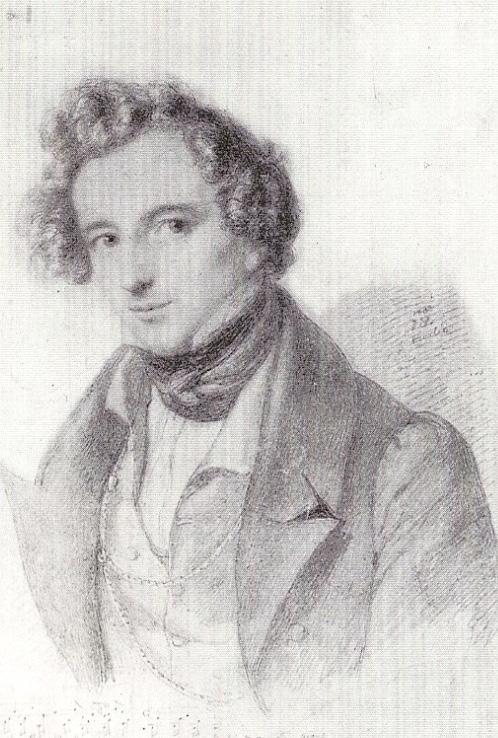
When he turned twenty-one, Mendelssohn travelled across Europe, explored the different countries and met some friends. For this wellconnected and increasingly famous young man, one of these friends was the 80-year-old master of German literature, Goethe. Goethe encouraged Mendelssohn to head to Italy and the young Mendelssohn spent 10 months there, slowly making his way across the country.
Mendelssohn’s impressions of Italy are captured in a series of watercolour paintings and this effervescent symphony. He was thoroughly enthralled by the landscape, lifestyle, history, and Mediterranean weather – which must have been particularly compelling for someone who grew up in the comparative gloom of Northern Germany!
The first movement is perhaps Mendelssohn’s cheeriest composition, with irrepressibly sparkling woodwinds setting the backdrop for the surging violin melody, which leaps with joy. There are some turbulent episodes in the middle, but these are quickly banished as the clear blue skies – which Mendelssohn absolutely loved –return.
Mendelssohn was inspired by a religious procession he observed in the streets of Naples for the second movement, as a sombre melody is woven over a stately bass line. Despite this solemnity, warm and tender melodies remind us of the Mediterranean sunshine. The Minuet in the third movement flows gracefully, and the contrasting Trio contains some light militaristic fanfares for the horns and woodwinds.
A musical storm launches the fourth movement, inspired by an energetic Neapolitan dance – the saltarello. The flutes start the rapidly skipping theme, and
Drawing of the composer by Eduard Bendemann, 1833.
it passes through and across the orchestra, building to a fiery and thrilling finale.
It is probably surprising to many people today to discover that Mendelssohn was never satisfied with this symphony and rewrote the last three movements before he died, removing much of its innocent joy in the process. Nevertheless, the (original) Italian Symphony which you will hear today has enjoyed immense popularity with audiences over the years.
Instrumentation
2 flutes, 2 oboes, 2 clarinets, 2 bassoons, 2 horns, 2 trumpets, timpani, strings
World Premiere 13 May 1833, London
First performed by SSO 8 Feb 1979
Notes by Christopher Cheong | Chris is a former lawyer and violist who recently joined the SSO's artistic planning team.

Young Spacefarer’s Guide to the Orchestra
6 Sep 2025
Sat, 11am & 2pm Esplanade Concert Hall
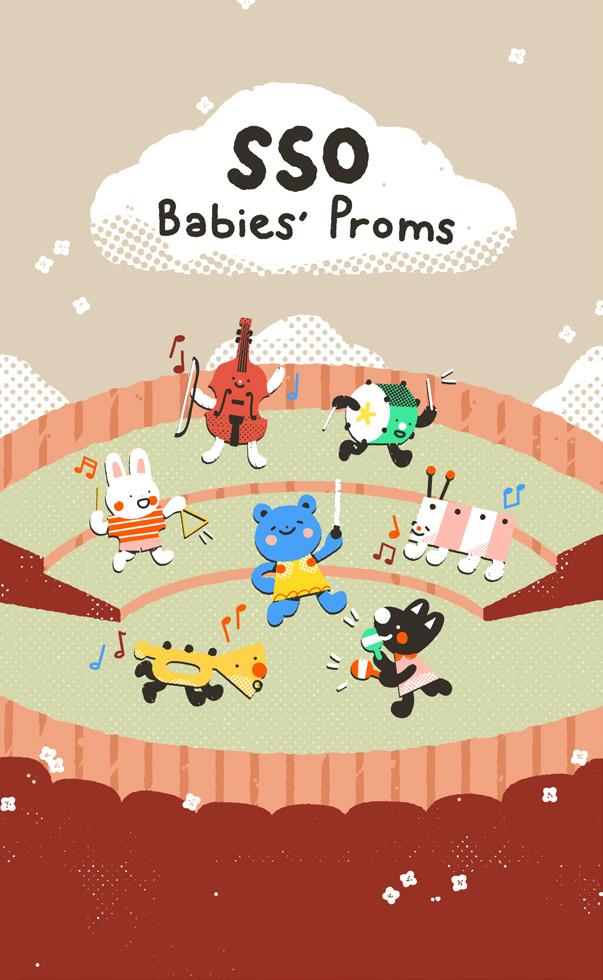
Come on a musical trek through space! Help our lost adventurer search the musical cosmos in a journey of self-discovery.
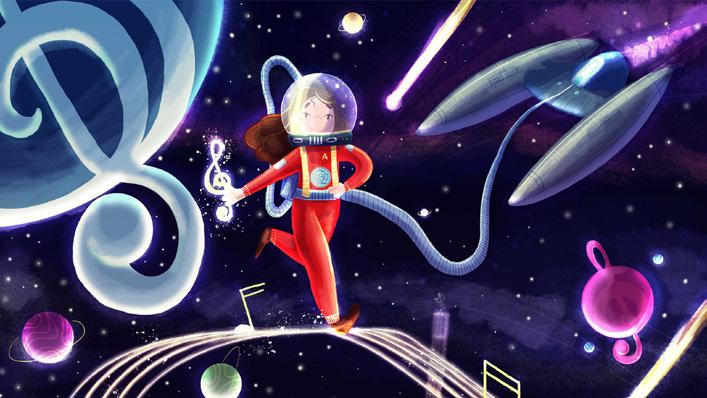
SSO Babies’ Proms
13 & 14 Sep 2025
Sat & Sun, 11am & 2pm Victoria Concert Hall
$35, $45
Discover the fun and fantastic world of the orchestra and its different instruments in this free-and-easy musical day out for parents and kids.
1 & 2 Nov 2025
Sat, 11am & 2pm l Sun, 11am Victoria Concert Hall
Put on your spookiest costume this Halloween and join us in this fun-filled, musical Halloween Spooktacular of wily witches, grinning ghouls and stumbling skeletons!
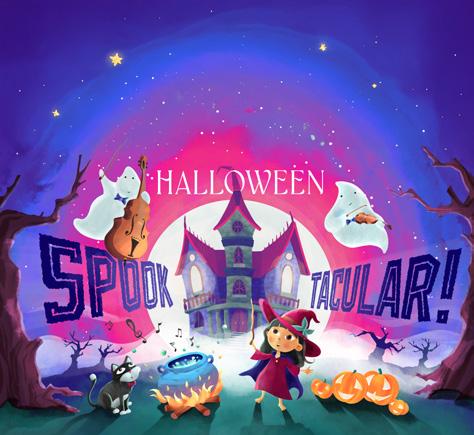
To Our Donor Patrons
We would like to express our deepest appreciation to the following individuals and organisations who support our mission to create memorable shared experiences with music in the past year. Without your support, it would be impossible for the SSO to continue to strive for artistic excellence and touch the hearts of audiences.
PATRON SPONSOR
Tote Board Group
(Tote Board, Singapore Pools & Singapore Turf Club)
MAESTRO CIRCLE
Mr & Mrs Goh Yew Lin
Stephen Riady Foundation
Temasek Foundation
The HEAD Foundation
Anonymous
CONCERTMASTER CIRCLE
DBS Bank Ltd
Dr & Mrs Antoine & Christina Firmenich
Francis & Anne Koh
S YMPHONY CIRCLE
Andreas & Doris Sohmen-Pao
Christopher Fussner
De Miguel Solaguren Family
Dr Thomas & Mrs Mary Zuellig
Jacqueline Yeh
Khoo Boon Hui
Mind the Gap 200 Fund
Ms Paige Parker & Mr Jim Rogers
Neo Group Limited
Anonymous (3)
CONCERTO CIRCLE
Cara & Tamara Chang
Dr Geh Min
Elaine and Eduardo Saverin Foundation Ltd
Far East Organization
Frans & Marie-Pierre Mol
Geoffrey & Ai Ai Wong
Geraldine Choong & Dennis Au
Guy Hentsch & Geoffrey Yu
Holywell Foundation Limited
Kris Foundation
Madeleine Cheok & Wong Hong Ching
Mavis Lim Geck Chin
Miriam & Merle Hinrich
Mr & Mrs Ong Kok Chye
Patek Philippe Southeast Asia
Priscylla Shaw
Prof Chan Heng Chee
Robert V & Vivian P J Chandran
UOB
Yong Ying-I


OVERTURE PATR ONS
Alan Chan
Anthony & Chloe Tan from ACE Team Foundation
Bernard Ryan & Michael Rowe
Blossom Hing
Cavazos Tinajero Family
Chen Xiaoyan
Chloe Lee & Family
Clarence Chua
Colin & Janet Leong
Devika & Sanjiv Misra
Dr & Mrs Adrian Koh
Dr & Mrs Choy Khai Meng
Dr Karen Soh
Dr Kevin T Yap
Embassy of France in Singapore
Eva & Nilay Patel
Farhana Sharmeen
Geraldine Lim & Lim Him Chuan
Hastens
Hong Leong Foundation
Indosuez Wealth Management
JCCI Singapore Foundation
Jeffrey Khoo
Joy & Han Li Toh
Kenneth Kwok
Kevin & Carrie Burke
Kris Foundation - Ms Lim Kang Ning
Krishnan Family
Leong Wai Leng
LGT Bank (Singapore) Ltd
Lito & Kim Camacho
LOY Contemporary Art Gallery
Marina Bay Sands
Martin Siah & Wendy Long
Mr & Mrs Mak Hoe Kit
Mr Xu & Mrs Cairong Ren
MTM Skincare Pte Ltd
NSL LTD.
Paul & Lena Ng
PCS Pte Ltd
Poh Khim Hong
Prima Limited
Prof Cham Tao Soon
Prof Gralf & Silvia Sieghold
Rathi Ho & Dorian Goh
Sameer Sain
Tan Meng Cheng Ivan
The Anjuman & Aziz Charitable Trust
Tommy Leung & Karen Er
Tony & Melanie Chew
Tower Capital Asia
V3 Wellness Pte Ltd
Vanessa & Darren Iloste
Watson Farley & Williams LLP
ZDR Investments
Anonymous (4)
SERENADE PATRONS
Chuin Wei Yap
Darren Lim & En Yu Tan
Dr June & Peter Sheren
D-Y Lin
Embassy of the Kingdom of Spain
Francoise Mei
G L Wee
Goh Hui Kok Michael
Goh Swee Chen
Isaiah & Suwei
Jocelyn Kum
John & Eliza Bittleston
John & Pauline Foo
Julian & Sandra Chang
Kenneth Kan
Keppel
Kishore & Anne Mahbubani
Lai Siu Chiu
Lee Ming San
Lee Shu Yen
RHAPSODY PATRONS
Adeline Ang
Adrian TL Chua
Aileen Tang
Ang Jian Zhong
Anna Liang Yao & Li Jingyi
Anthony Tay
Arjun Jolly & Priyanka Nayar
Audrey Ruyters
Belinda Koh
Benedict Teo
Benjamin Ma
Bloomberg Singapore Pte Ltd
Brenda Ang
Charles Robertson
Cheng Eng Aun
Debra Ng
Dr Chew Chee Tong
Dr Jade Kua
Dr Victor Lim
Eric Wong
Evelyn Chin
Faith Chia
Gin & Doug
Hoon Chew & Jennifer
Hwang Chih Ming
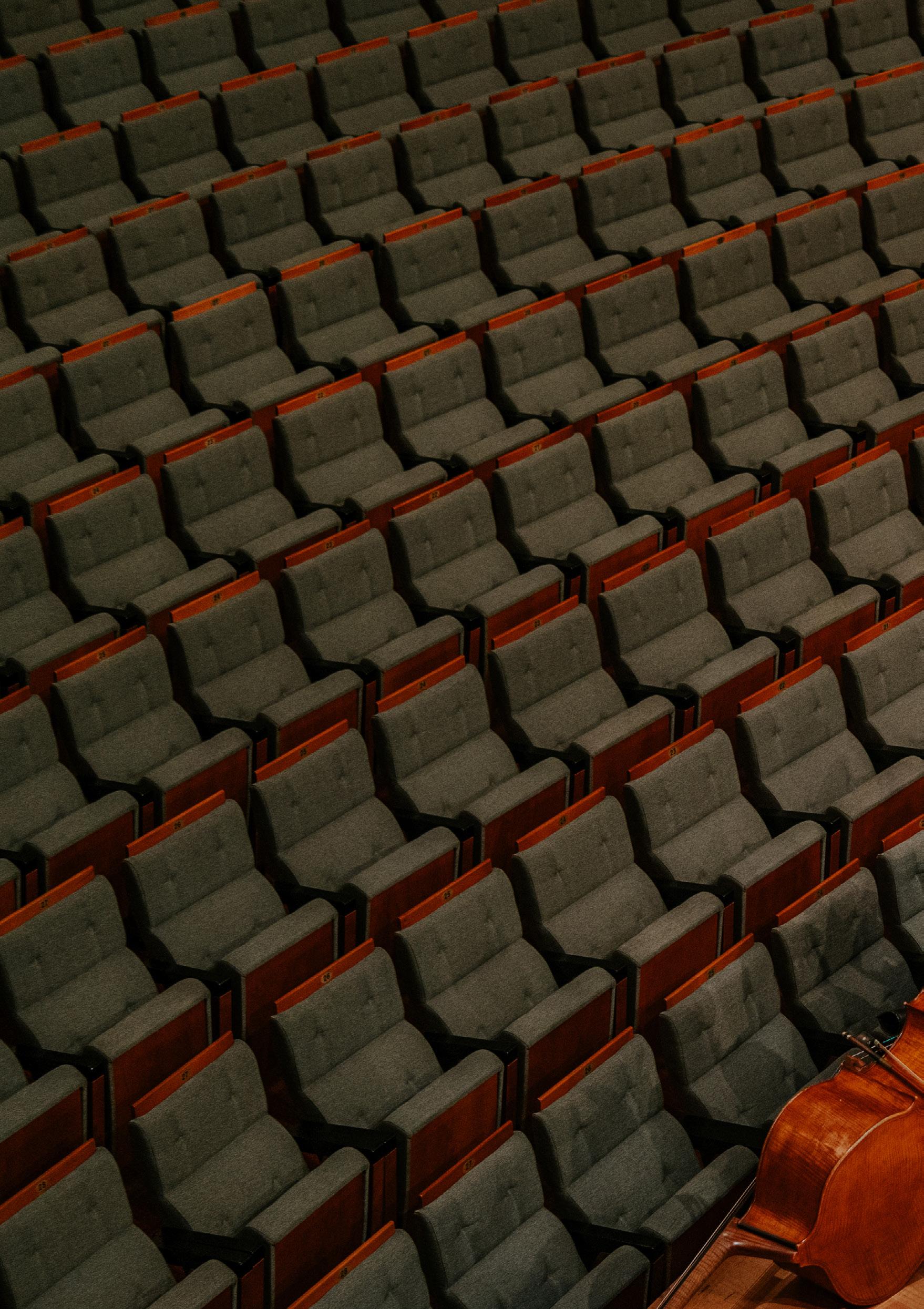
Lee Yeow Wee David
Leong Wah Kheong
Liwen & Steven Holmes
Lorinne Kon
Madeleine Lee
Maisy Koh
Marcelo V Achoa & Silvia Bordoni
Meng
Michael RPM Brenninkmeijer
Natalia & Alex Galinovskii
Ong Kong Hong
Paterson Lau & Pauline Tan
Shawn (See Hyung) Jeon
Suzanne Lim
Tan Seow Yen
Tan Wan Chi
The Linh Tinh Family
The Sohn Yong Family
Wayne & Kim Giap Khoo
Anonymous (4)
Ian & Freda Rickword
Jennifer Lee
Jenny Zhu Huimin
Jerry Gwee
Jesher Loi
Julian Tan
Julien Brousseau
Kenneth Oo
Kok Leong Lim
Kris Wiluan
Lawrence & Celeste Basapa
Lee Hyunsun
Marcel Smit & Hanneke Verbeek
msm-productions
Pierre Colignon
Prof Tamas Makany & Julie Schiller
SC & WY Leong
Singapore Pools (Pte) Ltd
Tang See Chim
Valerie Thean
Winston & Valerie Kwek
Wong Yan Lei Grace
Xinyi Ong
Anonymous (5)
A.R.
Andre Maniam
Ang Quek Kaifeng
Ang Seow Long
Anthony Chng
April Mak
Arkady Raynes
Arnoud De Meyer
Bryan Carmichael
Casey Tan Khai Hee
Chan Ah Khim
Chang Chee Pey
Choi Yuet Yuen
Chong Mi-Li Pamela
Chor Siew Chun
Chua Yeow Kiang
Churen Li
Claire & Ian Jones
Claire MC
Clarissa Chow
Claudia & Henning Figge
Colin Lang
CP
Cynthia Chee
Daniel Yong
Debby Lim
Deepa Chatrath
Derek Lim HK
Dex & Mint
Dr & Mrs Winson Lay
Dr Christopher Chen
Dr Elaine Lum
Dr Keith Goh
Dr Kong Tze Yean & Cristina Prado
Dr Norman Lee
Dr Rebecca Dent & Dr Greg Jakubowski
Dr Teo Kien Boon
Dr Wong Hin Yan
D.N.C.H
Edith & Sean Lim
Elaine Xu
Ernest Khoo
Eunice Huang
Ghislain Olagne
Giles Tan Ming Yee
Goh Chiu Gak

Gonsalves Gavin Jason Marshall
Gu Zhenhao
Hans Michael Brandes
Heinrich Grafe
Henry & Tiffany
Herman Felani MY
Ho Jun Yi
Jamie Lloyd Evans
Janek Schergen
Jason & Jennifer Chew
Jean Tan
Jeanie Cheah
Jeanne Lee
Jennie Chua
Jennifer S Wu
Jessica Cheam
Joanne Lim
Joseph Wolpin
J-P & Colette FELENBOK
K Goh Family
Kadir Satar
Kelvin Ho
Khor Cheng Kian
Koh Siew Yen Terri
Kyra Teo
Lau Soo Lui
Lele Chen & Hans Yeh
Li Danqi & Liu Yi
Lily Low
Lim Yuin Wen
Low Boon Hon
Loy Suan Mao, Alwyn
Maggie Dong
Marcel & Melissa Xu
McCann Family
Michael & Katherin Puhaindran
Min Tan
Minwei
Mrs Goh Keng Hoong
Naserah Tyebally
Nicole Ng
Nicole Padilla & Sebastian Sohn
Nishioka Hiroyuki
Nurture With Love Suzuki Music School
Ong Chee Siong
Parthesh Gulawani
Patricia Lim
Patrick Lee
Pauline Ang
Phua Ching Shyen
Pigar & William
Prof Goh Suat Hong
Richard Hartung
Robert Khan & Co Pte Ltd
Ronald & Janet Stride
Sandra Tsao
Soh Leng Wan
Sonja & Viktor Leendertz
Suranga Rajapakse
Sylvie Gleises
Tan Kok Huan
Tan Peng Peng
Tania Wee
Tatiana Antonova & Stanislav Miroshnichenko
Teo Eng Chai
Teo Wee Poh
Terence Heng
Tiffany Choong & Shang Thong Kai
Ting Tay
Virna Machado & Ashish Goyal
Wang Pei Zhong
Wicky Wong
Xiao Li
Xu Yixin
Yan Xia
Yang Tian
Yee Deng Tan
Yeo Su Inn
Yong Chuk Kwin
Yong Seow Kin
Yuna Chang
Zeng Qiao Jia
Zhang Zheng
Zhu Yulin
Anonymous (50)
This list reflects donations that were made from 1 Jul 2024 to 30 Jun 2025. We would like to express our sincere thanks to donors whose names were inadvertently left out at print time.
The Singapore Symphony Group is a charity and a not-for-profit organisation. Singapore tax-payers may qualify for 250% tax deduction for donations made. You can support us by donating at www.sso.org.sg/donate or www.giving.sg/sso.

4
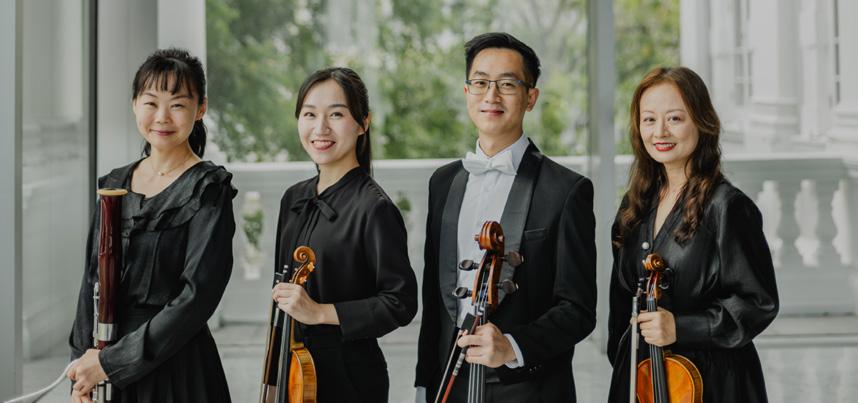
As a valued patron of the SSO, you will receive many benefits. How can you help?
While SSO is supported partially by funding from the Singapore government, a significant part can only be unlocked as matching grants when we receive donations from the public. If you are in a position to do so, please consider making a donation to support your orchestra – Build the future by giving in the present.
Corporate Giving
We provide our Corporate Patrons with impressive entertainment and significant branding opportunities. Through our tailored packages, corporates may benefit from:
• Publicity and hospitality opportunities at an SSO concert or your private event,
• Acknowledgement and mentions in SSO’s key publicity channels,
• National Arts Council (NAC) Patron of the Arts nominations,
• Tax benefits.
Packages start at $10,000 and can be tailored to your company’s branding needs.
Partnership
We partner with various corporates through tailored in-kind sponsorship and exchange of services. Current and recent partnerships include Official Hotel, Official Airline, and we offer other exciting titles.
For more details, please write to Sarah Wee at sarah.wee@sso.org.sg
SPECIAL RECOGNITION
A Standing Ovation
We recognise major gifts that help sustain the future of the Singapore Symphony Group. The recognition includes naming of a position in the SSO or in our affiliated performance groups such as the Singapore National Youth Orchestra and the Singapore Symphony Choruses.
F or more information, please write to Chelsea Zhao at chelsea.zhao@sso.org.sg
SSO Concertmaster l GK Goh Chair
In July 2017, the SSO established the GK Goh Chair for the Concertmaster. Mr Goh Geok Khim and his family have been long-time supporters of the national orchestra. We are grateful for the donations from his family and friends towards this Chair, especially Mr and Mrs Goh Yew Lin for their most generous contribution.
Mr Igor Yuzefovich was the inaugural GK Goh Concertmaster Chair. The position is currently vacant.
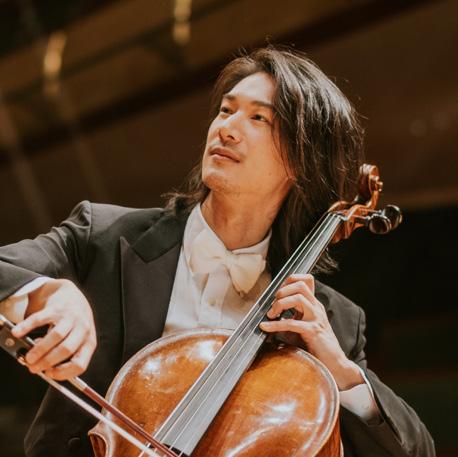
SSO Principal Cello
The Head Foundation Chair
In recognition of a generous gift from The HEAD Foundation, we announced the naming of our Principal Cello, “The HEAD Foundation Chair” in November 2019. The Chair is currently held by Principal Cellist Ng Pei-Sian.
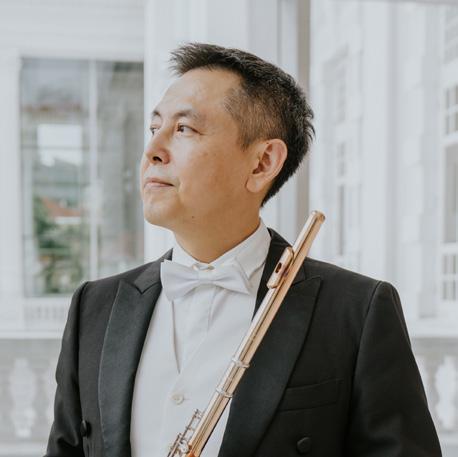
SSO Principal Flute
Stephen Riady Chair
In recognition of a generous gift from Dr Stephen Riady, we announced in May 2022 the naming of our Principal Flute, “Stephen Riady Chair”. The position is currently held by our Principal Flutist Jin Ta.
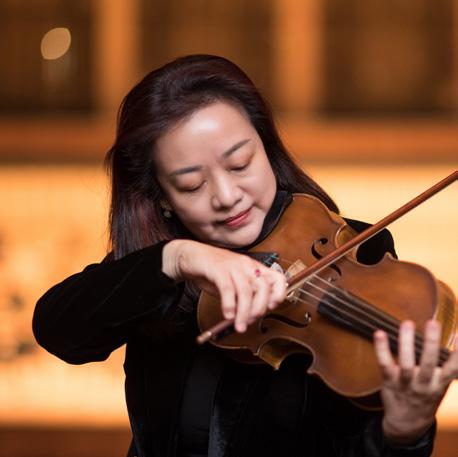
SSO Principal Viola
Tan Jiew Cheng Chair
In recognition of a generous gift from the Estate of Tan Jiew Cheng, we announced in February 2024 the naming of our Principal Viola, “Tan Jiew Cheng Chair”. The position is currently held by our Principal Violist Manchin Zhang.
SPECIAL RECOGNITION
Quantedge Music Director
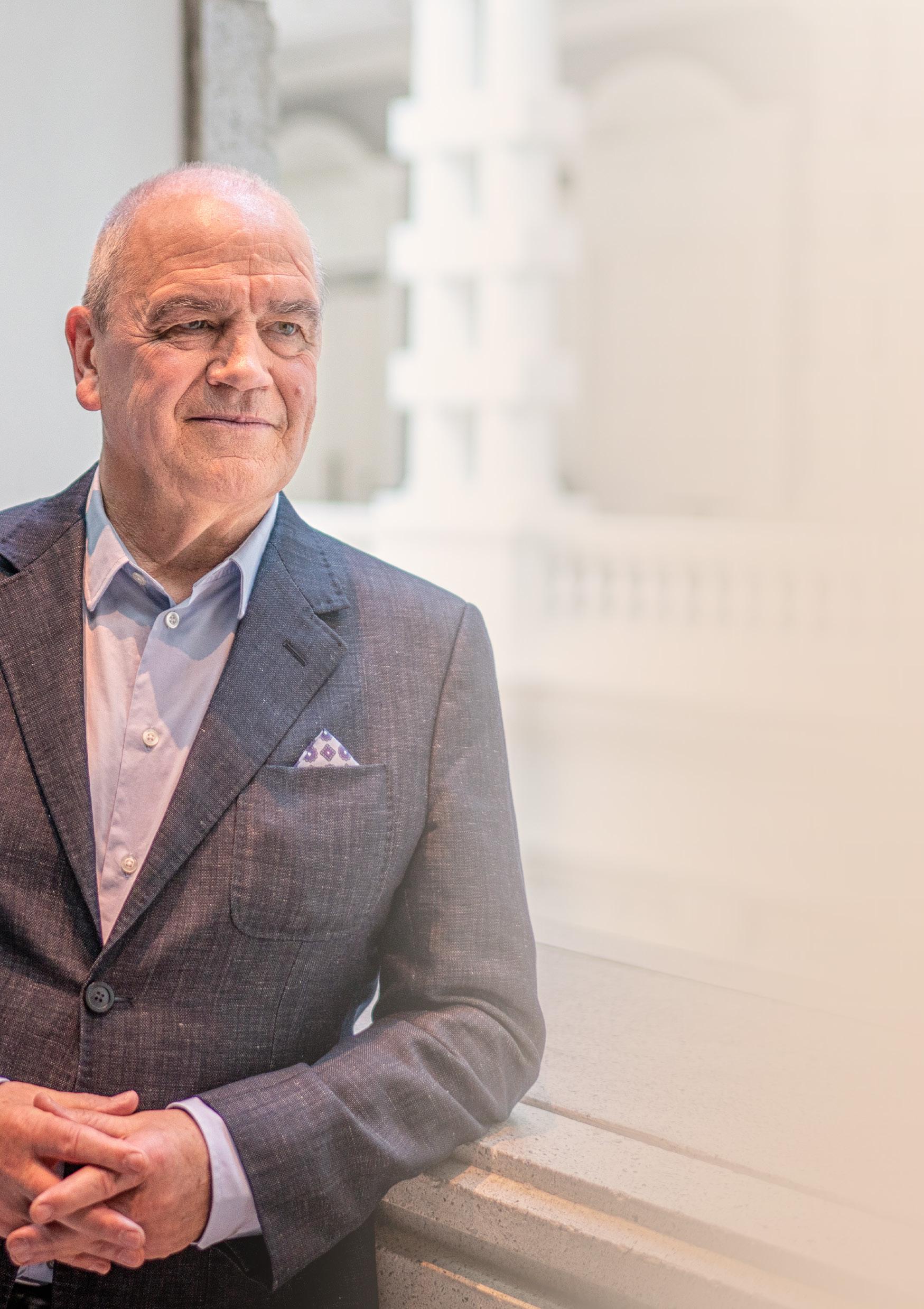
The SSO is delighted to announce the naming of the “Quantedge Music Director” position, currently held by Maestro Hans Graf.
With his spirit of musical exploration, innovative programming, and captivating stage presence, Maestro Graf has consistently inspired audiences and elevated orchestras to new heights. We are deeply grateful for his continued leadership as Chief Conductor in the 2020/21 season and Music Director since the 2022/23 season.
We extend our sincerest gratitude to our anonymous donor for this generous gift of $3 million to mark SG60.
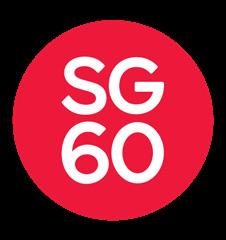

Maestro Hans Graf
© BRYAN VAN DER BEEK
Board of Directors and Committees
Chair
Goh Yew Lin
Board of Directors
Chang Chee Pey
Chng Kai Fong
Andress Goh
Kenneth Kwok
Clara Lim-Tan
Jesher Loi
Lynette Pang
Prof Qin Li-Wei
Jovi Seet
Farhana Sharmeen
Doris Sohmen-Pao
Prof Peter Tornquist
Geoffrey Wong
Andrew Yeo Khirn Hin
EXECUTIVE & NOMINATING COMMITTEE
Goh Yew Lin (Chair)
Chng Kai Fong
Lynette Pang
Geoffrey Wong
HUMAN RESOURCES COMMITTEE
Doris Sohmen-Pao (Chair)
Jesher Loi
Prof Qin Li-Wei
Heinrich Grafe*
Carmen Wee*
FINANCE & INVESTMENT COMMITTEE
Geoffrey Wong (Chair)
Andress Goh
Chua Keng Hong*
Alex Lee*
AUDIT & RISK COMMITTEE
Jovi Seet (Chair)
Prof Peter Tornquist
Andrew Yeo Khirn Hin
Ryan Siek*
COMMUNITY & YOUTH E NGAGEMENT COMMITTEE
Clara Lim-Tan (Chair)
Chang Chee Pey
Farhana Sharmeen
Asst Prof Kat Agres*
Cecilia Pang*
SSO Musicians' Committee
Hoang Van Hoc
Austin Larson
Li Xin
Christopher Mui
David Smith
Elaine Yeo
Zhao Tian
SSO Council
Alan Chan (Chair)
Odile Benjamin
Prof Chan Heng Chee
Prof Arnoud De Meyer
Dr Geh Min
Heinrich Grafe
Khoo Boon Hui
Liew Wei Li
Lim Mei
Sanjiv Misra
Paige Parker
Dr Stephen Riady
Priscylla Shaw
Prof Gralf Sieghold
Prof Bernard Tan
Dr Tan Chin Nam
Wee Ee Cheong
Yong Ying-I
*co-opted member
Singapore Symphony Group Administration
Chief Executive Officer
Kenneth Kwok
Deputy CEO
Programmes & Production
Kok Tse Wei
CEO OFFICE
Shirin Foo
Musriah Bte Md Salleh
ORGANISATION DEVELOPMENT
Lillian Yin
A rtistic Planning
Hans Sørensen (Head)
Christopher Cheong
A RTISTIC ADMINISTRATION
Jodie Chiang
Terrence Wong
Jocelyn Cheng
Michelle Yeo
Operations
Ernest Khoo (Head)
L IBRARY
Wong Yi Wen
Cheng Yee Ki
Ng Yi Xiu
ORCHESTRA MANAGEMENT
Chia Jit Min (Head)
Charis Peck Xin Hui
Kelvin Chua
P RODUCTION MANAGEMENT
Noraihan Bte Nordin
Nazem Redzuan
Leong Shan Yi
Asyiq Iqmal
Khairi Edzhairee
Khairul Nizam
Benjamin Chiau
DIGITAL PRODUCTION
Avik Chari
Deputy CEO
Patrons & Corporate Services
Jenny Ang
Community Impact
COMMUNITY ENGAGEMENT
Kua Li Leng (Head)
Whitney Tan
Samantha Lim
Lynnette Chng
Darren Siah
C HORAL PROGRAMMES
Kua Li Leng (Head)
Lu Heng
Chang Hai Wen
Mimi Syaahira
SINGAPORE NATIONAL YOUTH ORCHESTRA
Ramu Thiruyanam (Head)
Tang Ya Yun
Tan Sing Yee
Ridha Ridza
ABRSM
Patricia Yee
Lai Li-Yng
Joong Siow Chong
Freddie Loh
May Looi
Corporate Services
F INANCE, IT & FACILITIES
Rick Ong (Head)
Alan Ong
Goh Hoey Fen
Loh Chin Huat
Md Zailani Bin Md Said
HUMAN RESOURCES & ADMINISTRATION
Valeria Tan (Head)
Janice Yeo
Fionn Tan
Netty Diyanah Bte Osman
Patrons
D EVELOPMENT
Chelsea Zhao (Head)
Nikki Chuang
Sarah Wee
Kevin Yeoh
C OMMUNICATIONS, DIGITAL & MARKETING
Cindy Lim (Head)
Communications
Nikki Loke
Elizabeth Low
Data & Digital Projects
Calista Lee
Lim Wen Jie
Marketing & Content
Chia Han-Leon
Hong Shu Hui
Myrtle Lee
Jana Loh
Kashmira Kasmuri
Carrie Woo
CUSTOMER EXPERIENCE
Randy Teo
Dacia Cheang
Joy Tagore
Upcoming Chamber & Organ Concerts
at the V i ctoria Concert Hal l
SSO Chamber Series: Summer Music 21 Sep 4pm
A lazy summer’s frolic, a jester’s gambol with fate, and finally, peaceful Romantic serenity. This attractive programme of chamber music performed by musicians of the Singapore Symphony Orchestra is a display of the versatile voices of the woodwind instrument family.
SSO Chamber Series: Die Fledermaus in a Pocket 10 1 1 Oct 7.30pm
Filled to the brim with lively polkas and irresistible waltzes, Johann Strauss II’s Die Fledermaus (“The Bat”) is a tale of love affairs and lovers’ identities gone awry. Come see this abridged 90-minute version of one of the most popular comic operettas of all time.
SSO Organ Series: An Organ Halloween with Joseph Nolan 26 Oct
7.30pm
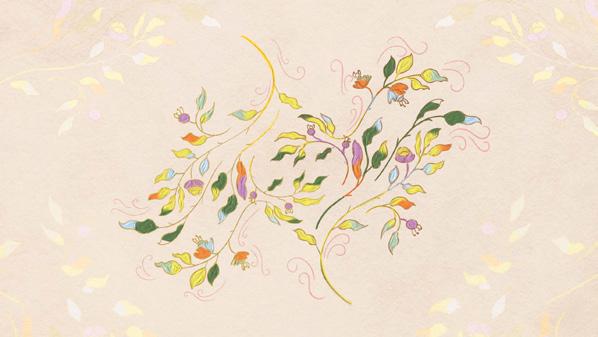
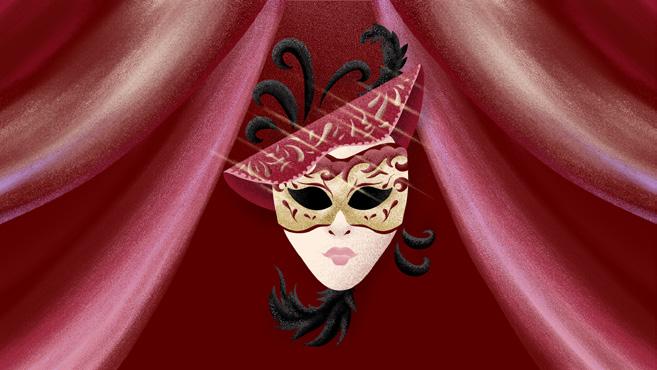
The award-winning British-Australian organist Joseph Nolan has been hailed as “indisputably one of the world’s finest organists” (Limelight) “for his towering technique, vivid virtuosity, and inspired interpretive insight’’ (Gramophone). Step into the Victoria Concert Hall this October and hear him play haunting classics on the Klais Pipe Organ, including Bach’s famous “Toccata” (BWV565), Saint-Saëns’s Danse Macabre and selections from Boëllmann’s Suite Gothique.
Want to know more? Scan

